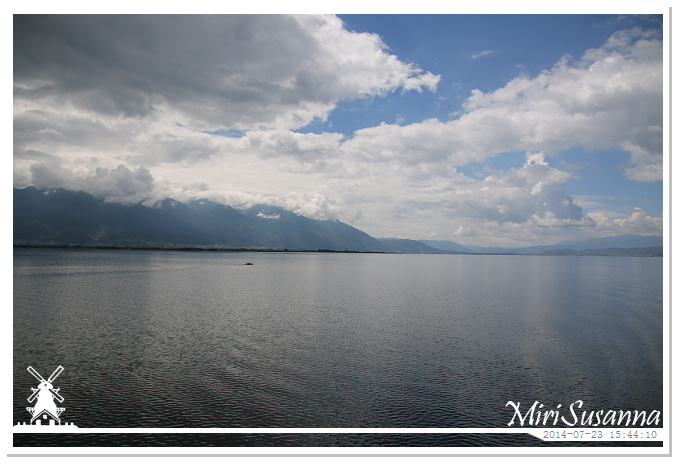
下午兩點,我們從蝴蝶泉附近的碼頭乘坐杜鵑號遊輪遊洱海。洱海,長約40公里,寬約7-8公里,面積250平方公里,是雲南省第二大、中國第七大的淡水湖。兩個半小時的旅程,讓我們以很悠閒的方式感受洱海之大、蒼山之美,也為早晨匆促的行程來個緩衝。
14pm, we joined a cruise tour to enjoy the beauty of Erhai Lake and the Cangshan Mountain that surround the lake. Erhai is situated at 1,972 metres above sea level. In size, the North-South length of the lake is 40 kilometres and the East-West width is roughly 7–8 kilometres. Its area is 250 square kilometres, making it the second largest lake of Yunnan Province. This 2,5 hour journey was really the best way to relax ourselves after the rushing programmes in the morning.
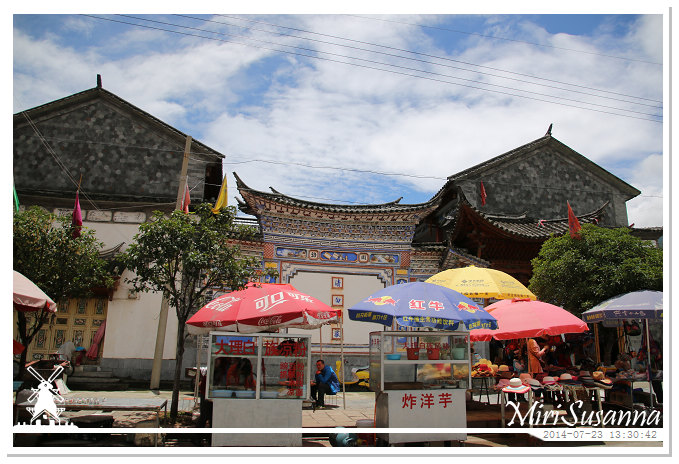
往渡口的路上。
On the way to marina.
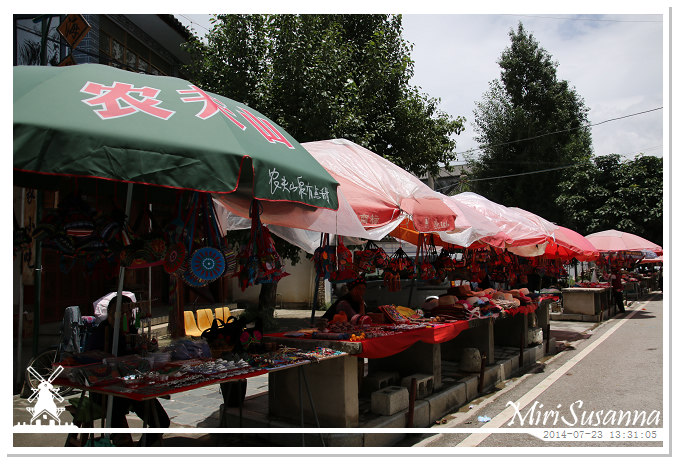
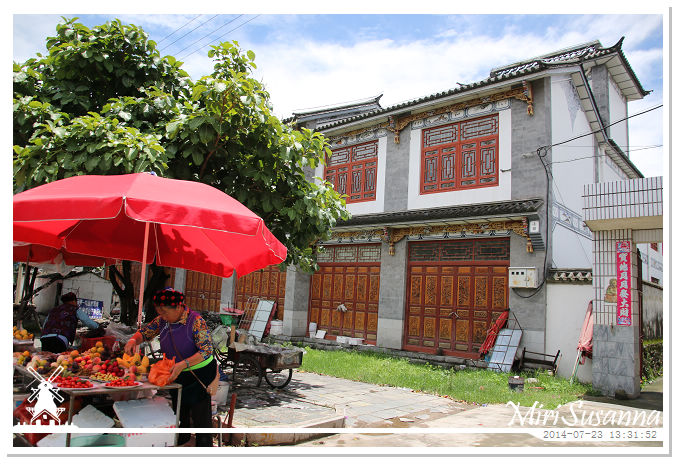

Fresh fruit.


我們的遊輪--杜鵑號。
Our cruise.

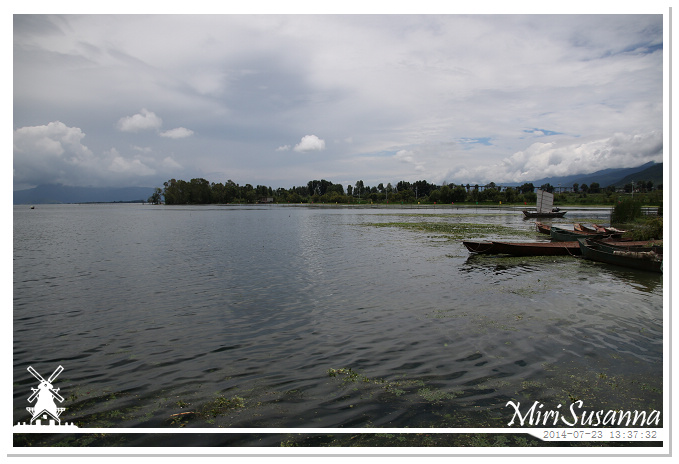

上船後,順利搶到小包間,雖然得自付額外費用,但不必跟整船人搶外邊的座位。
On board, and paid a private section for us.
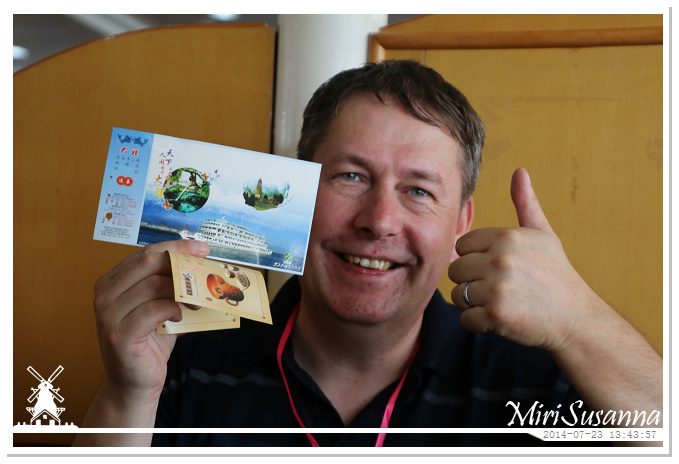
Bart is happy, and we’re happy!
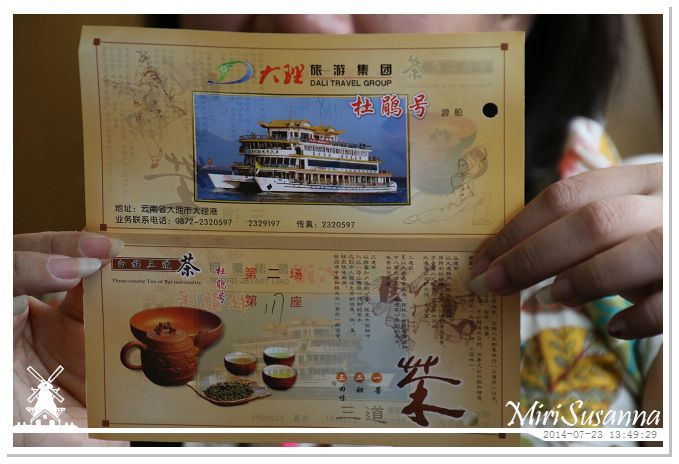
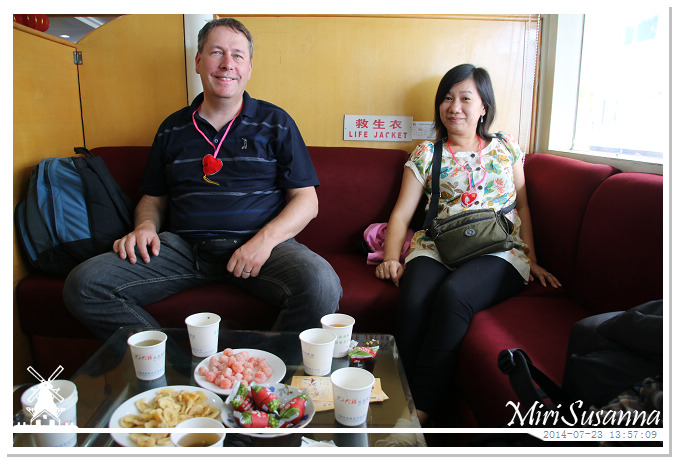
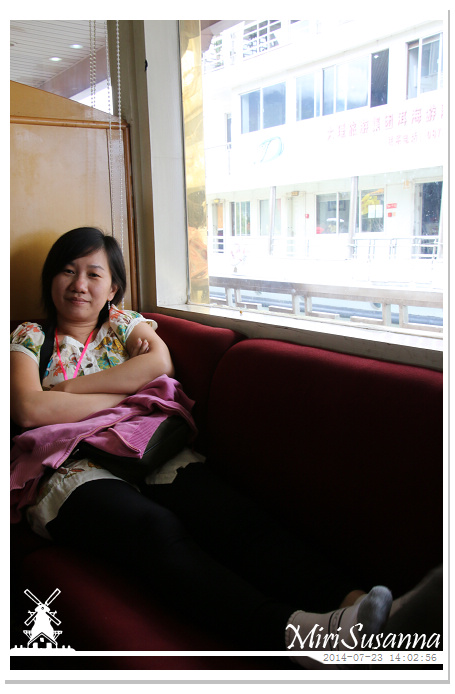
三人包一小包間的好處就是要坐要躺都成。
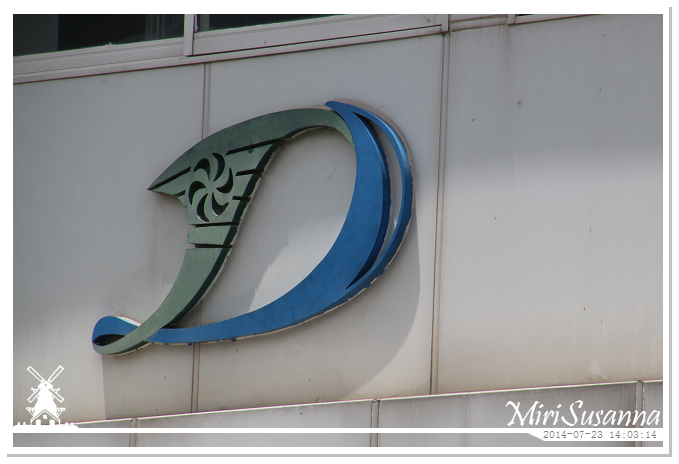

出發了。
Depart from marina.

蒼山美景。
Cangshan Mountain.

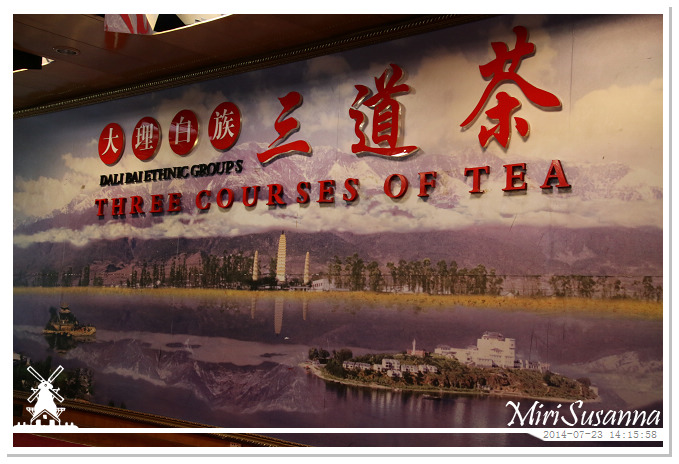
大理白族歌舞表演三道茶。
Dali Bai Ethnic Groups presents the Three Courses of Tea.
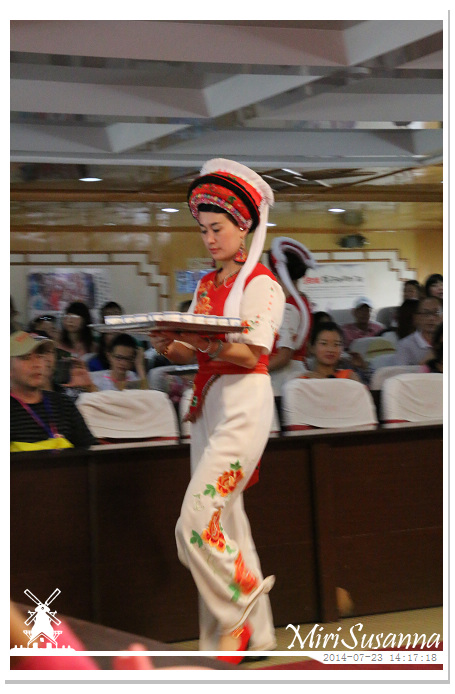

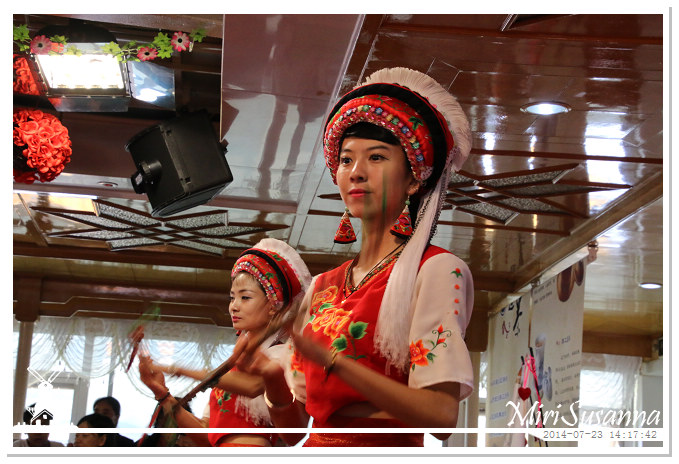
紅白搭配的民族服裝實在漂亮,美女的頭飾代表著大理“風花雪月”。
Beautiful traditional clothes of theBai ethnic, one of the 56 ethnic groups in China.



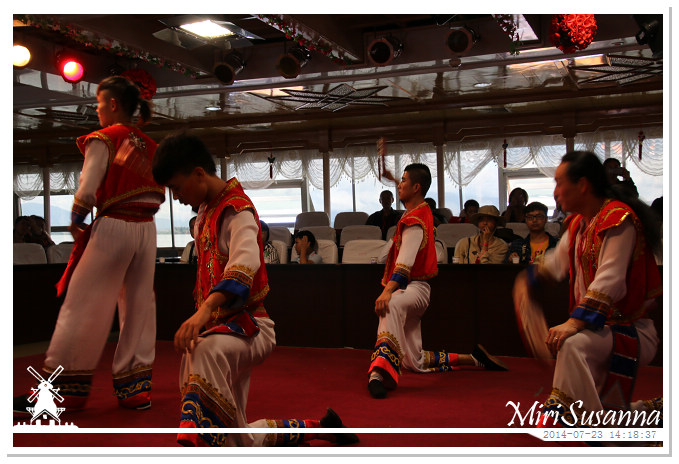
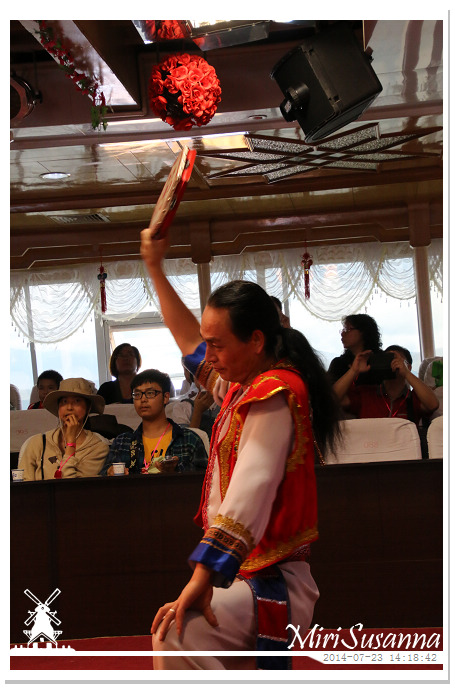

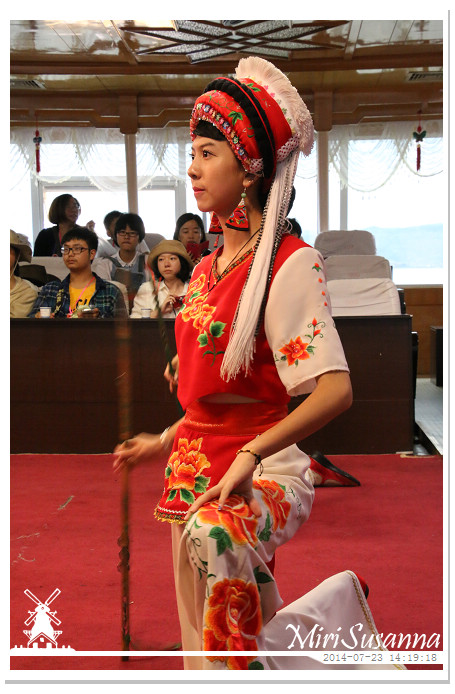



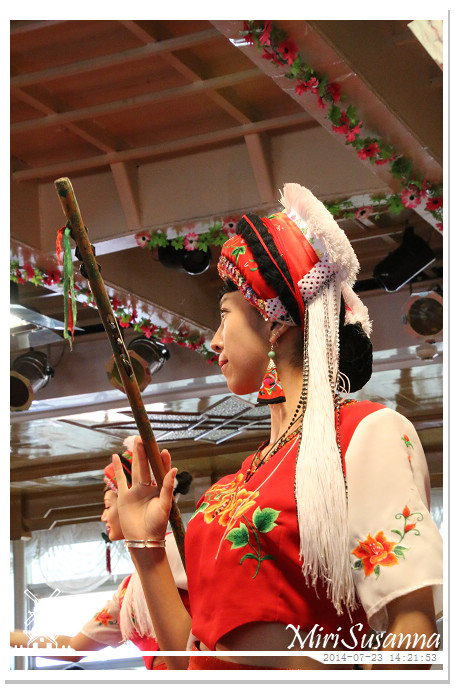




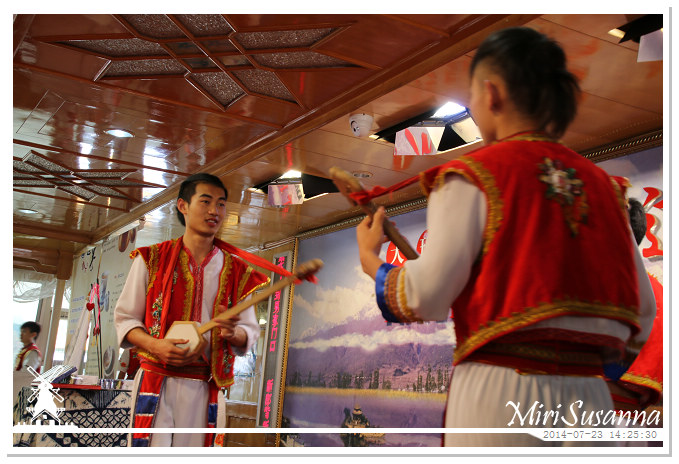

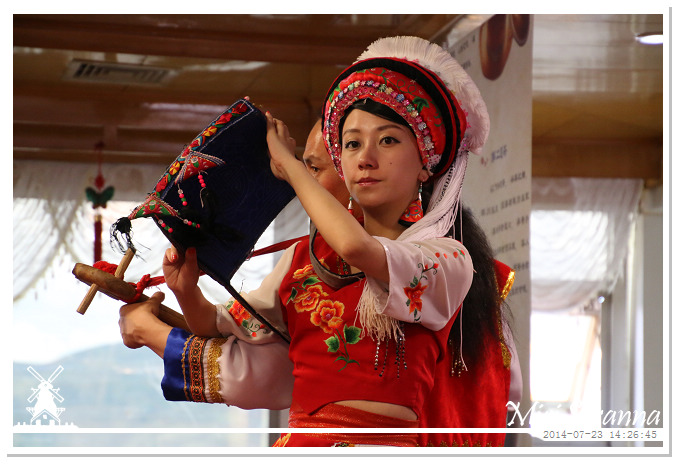
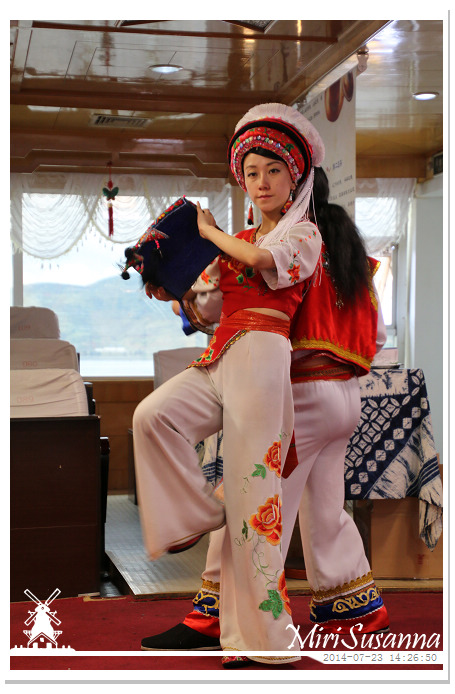
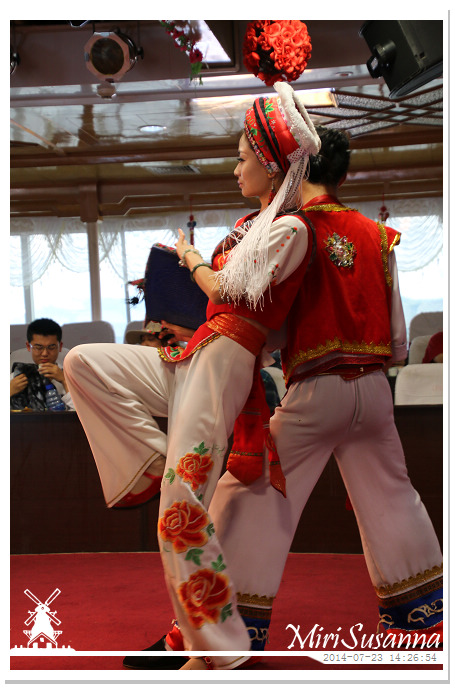

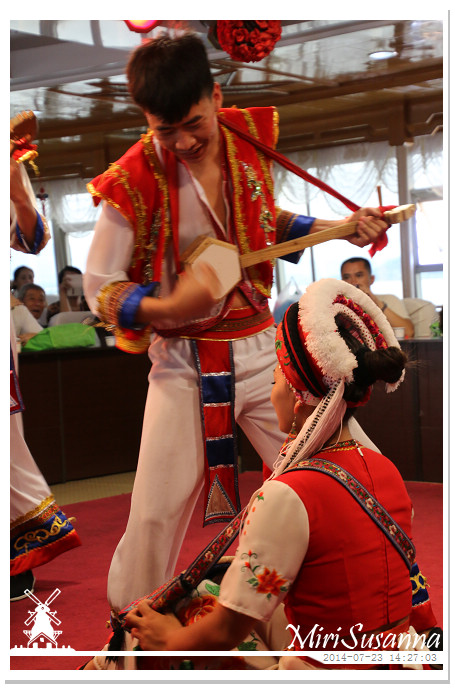
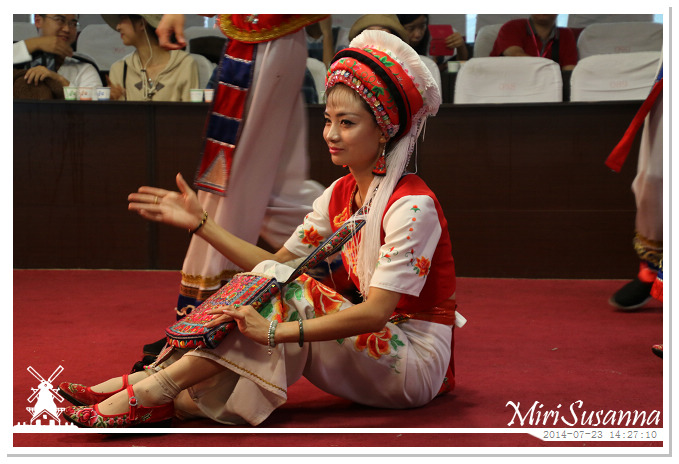
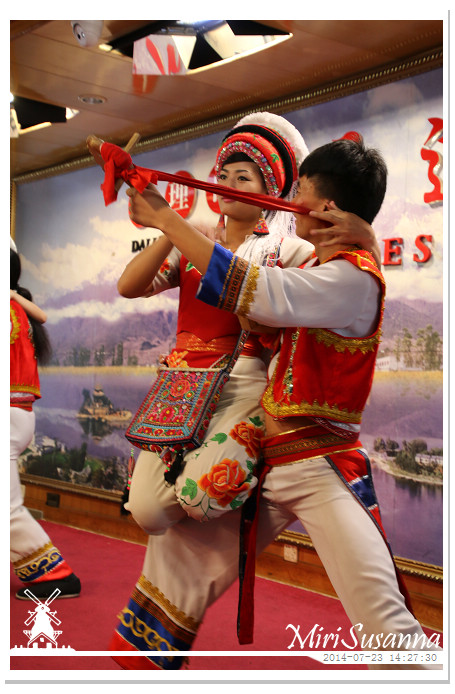

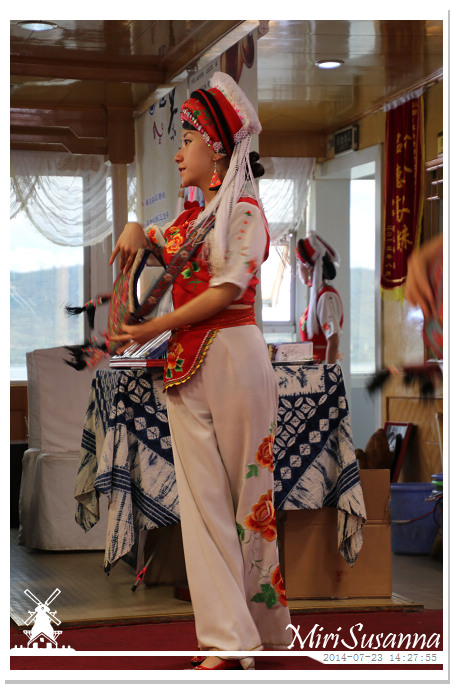
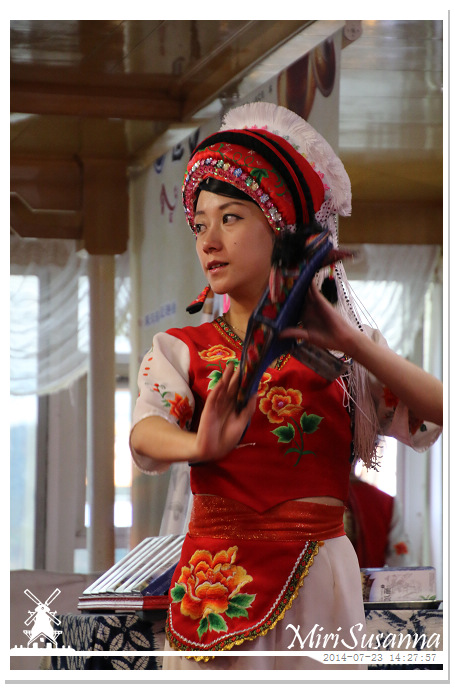
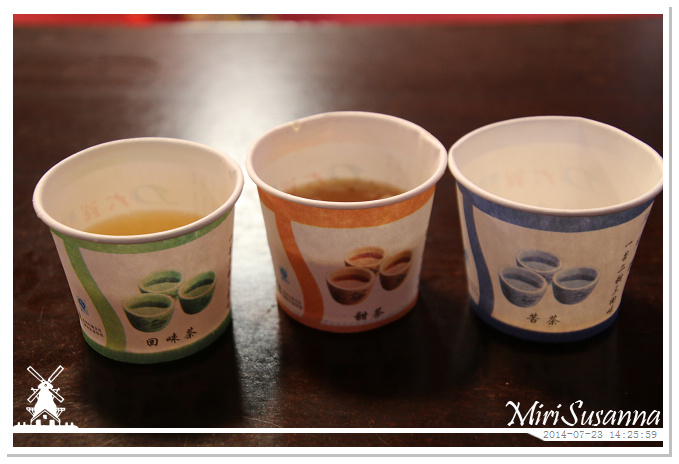
三道茶:苦茶、甜茶、回味茶。
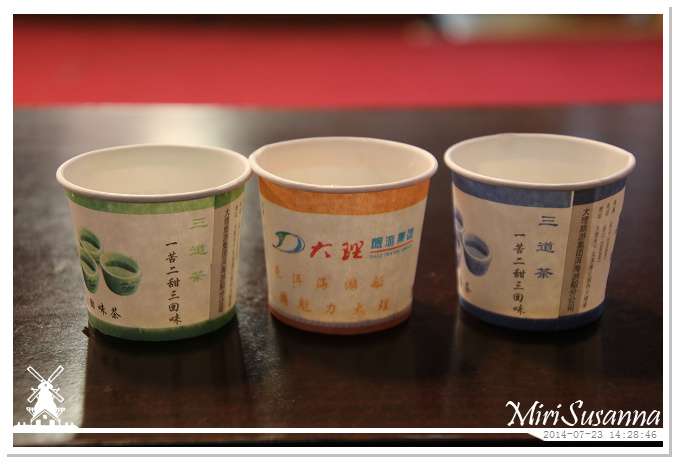
在歌舞表演當兒,觀眾可以品嚐這三道茶。
During the show, we’re served with 3 types of tea.
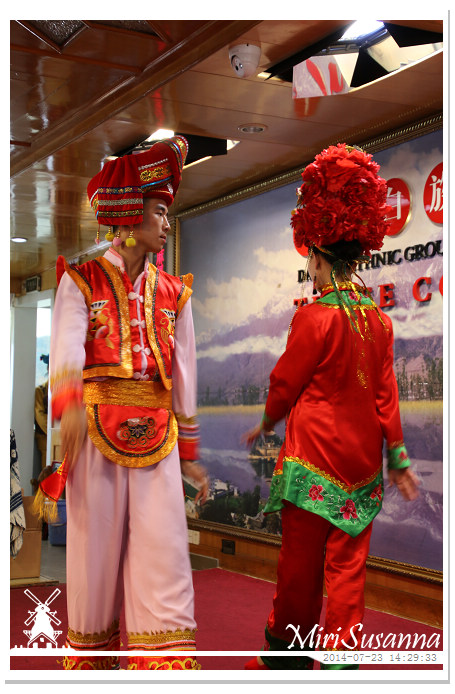
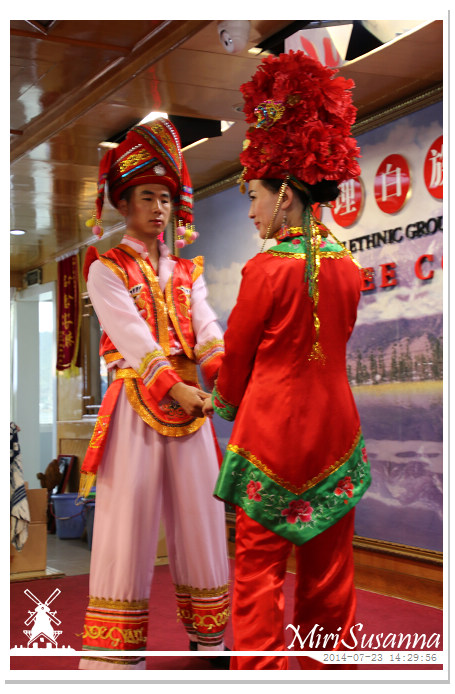
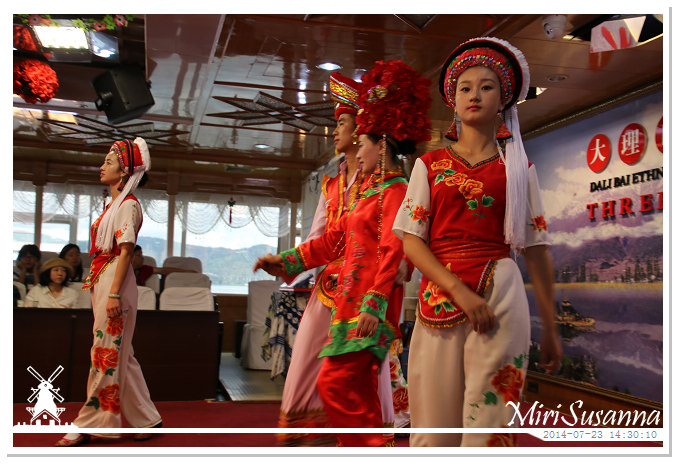


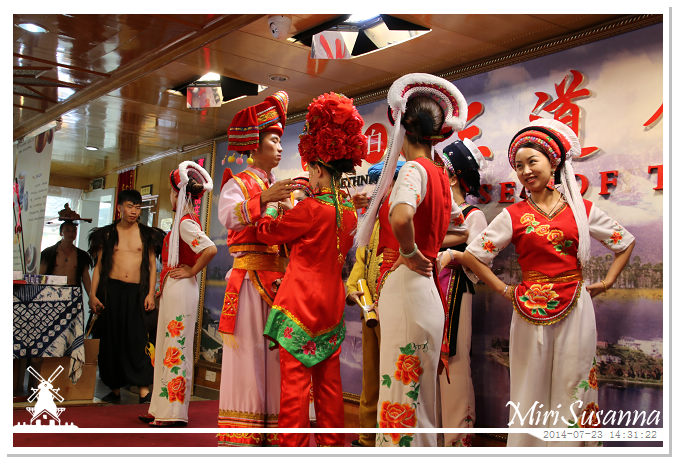



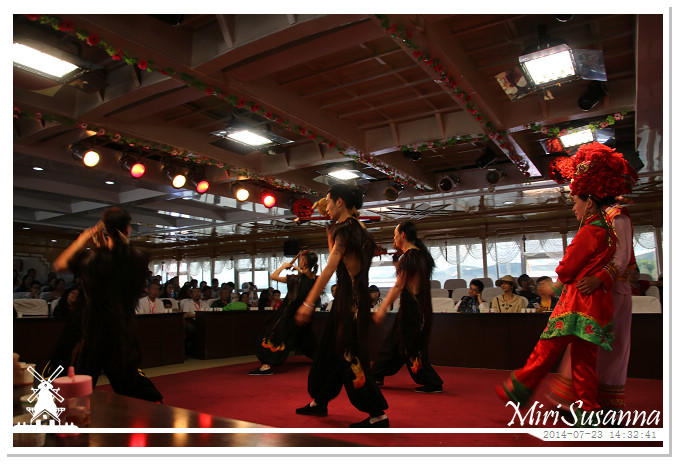
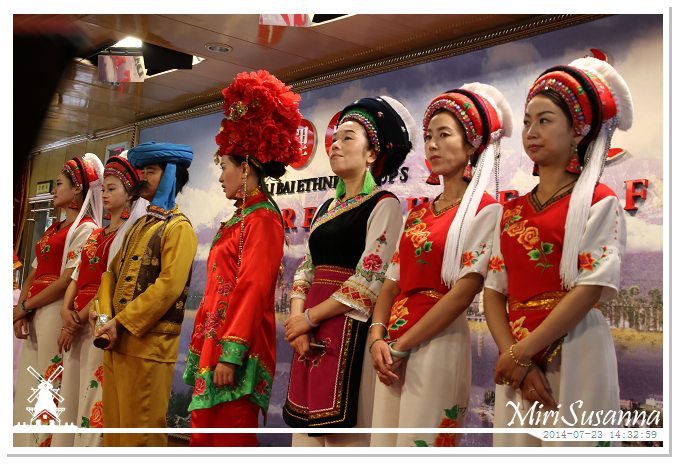
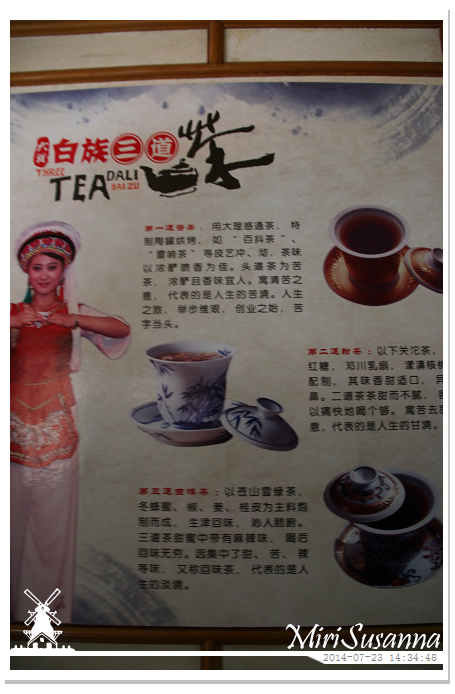
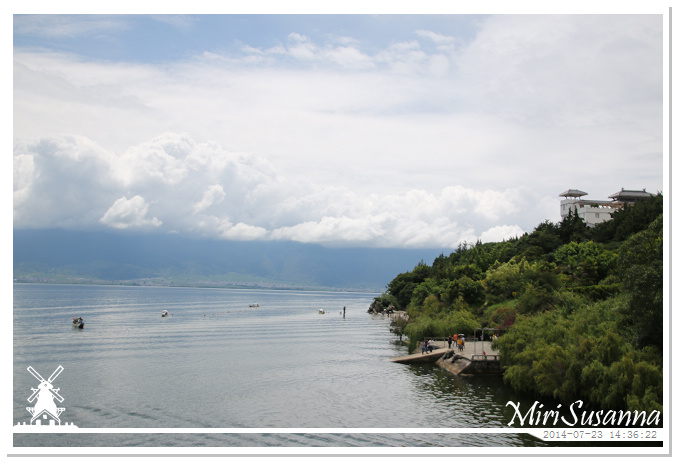
欣賞了“三道茶”歌舞表演,遊輪已經準備在南詔風情島停泊了。
After the show, we’ve arrived the Nanzhao Amorous Island.

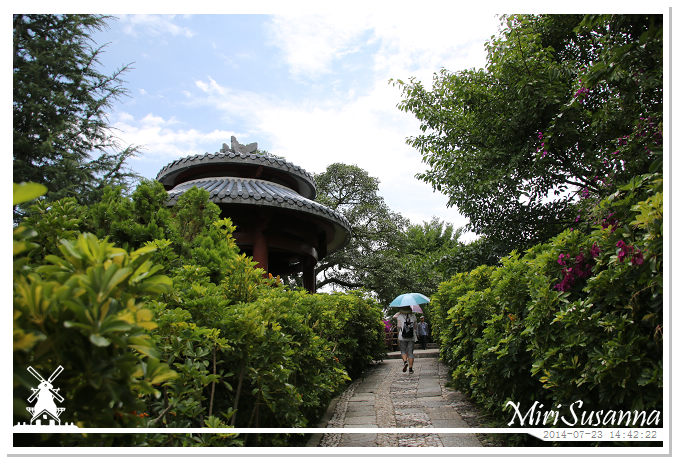
南詔風情島是洱海的三島之一。


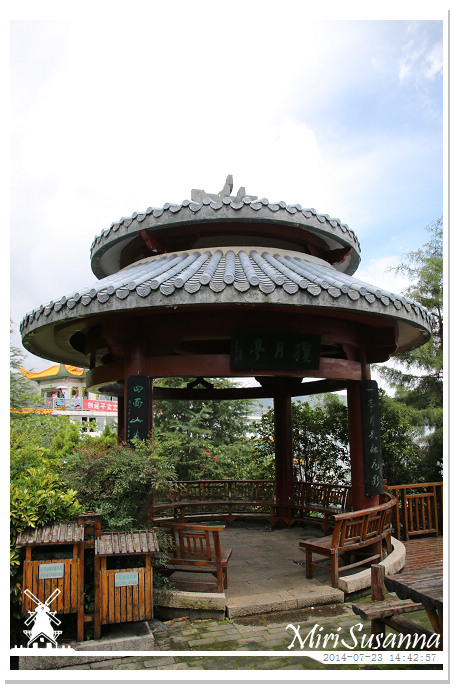




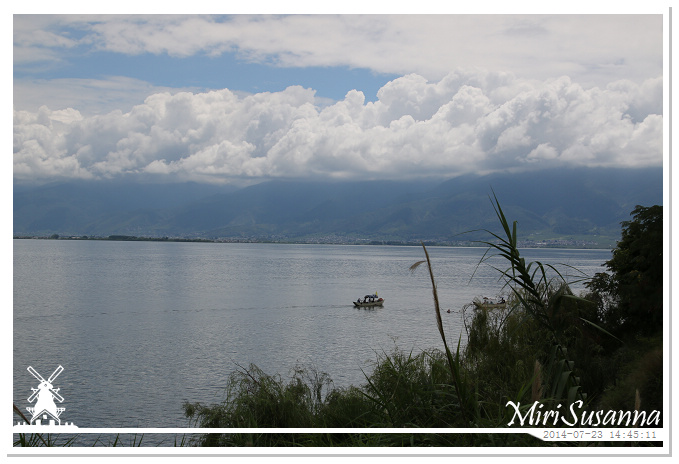

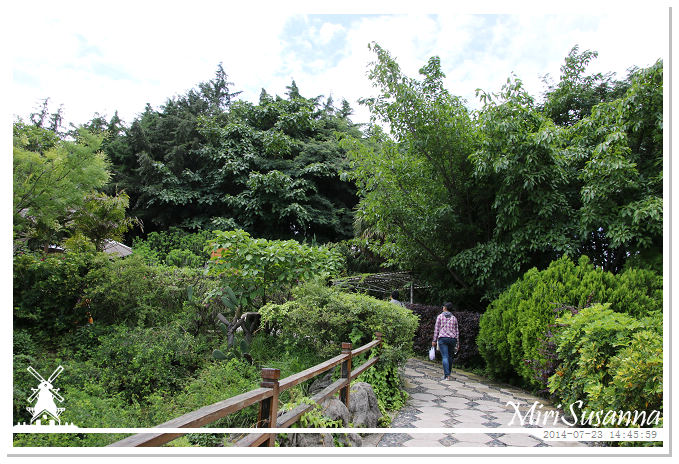
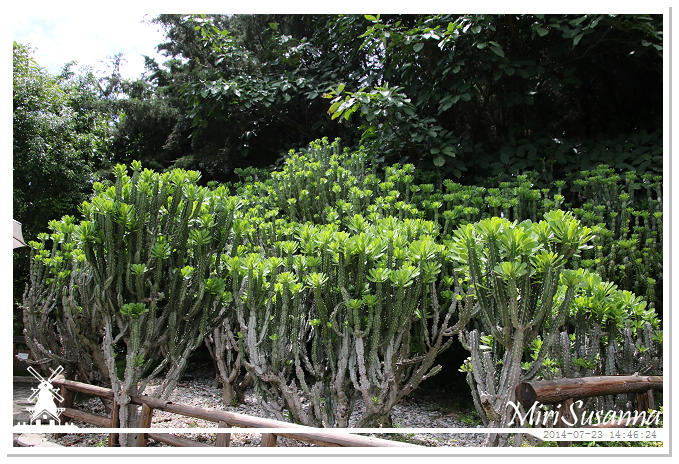
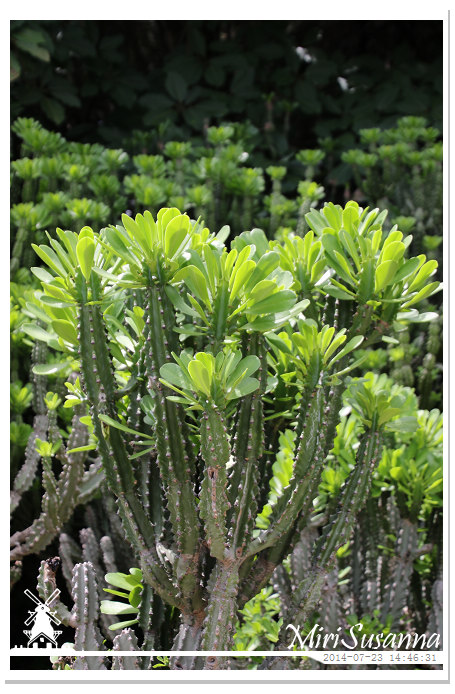
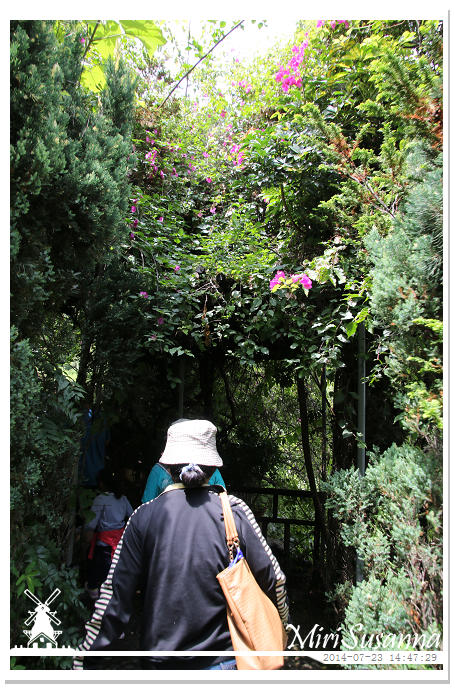

“雲南福星”廣場上的漢白玉觀音雕像。



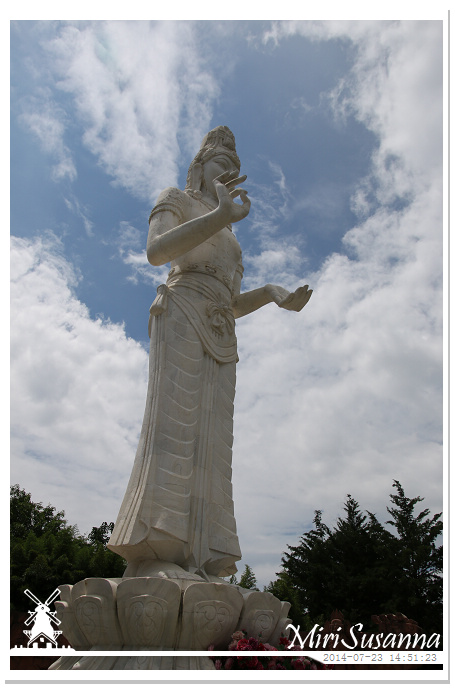
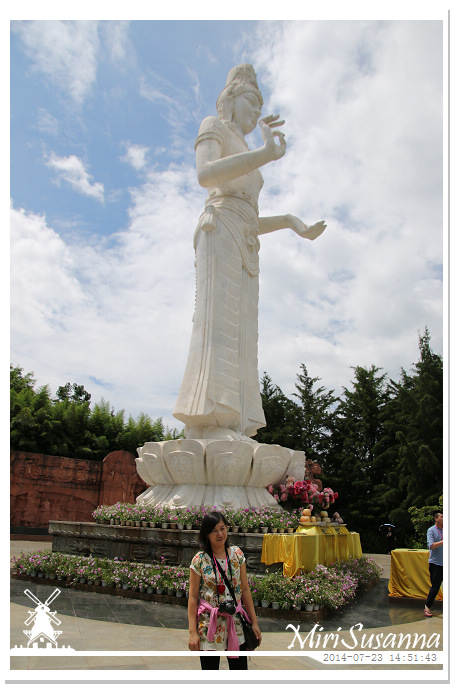
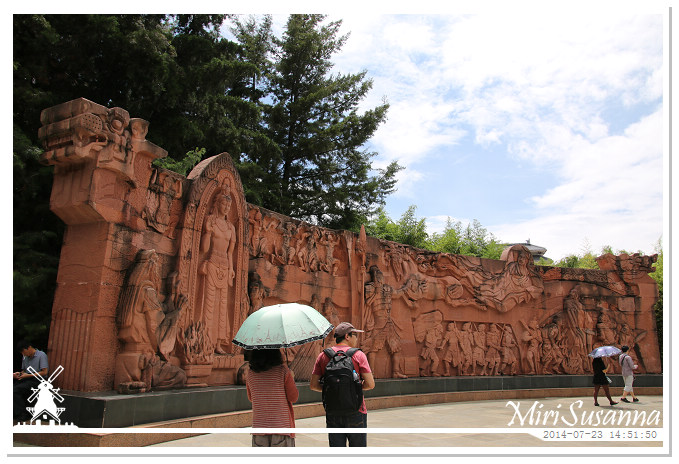
這是大理神話中觀音十八化傳說之浮雕牆。

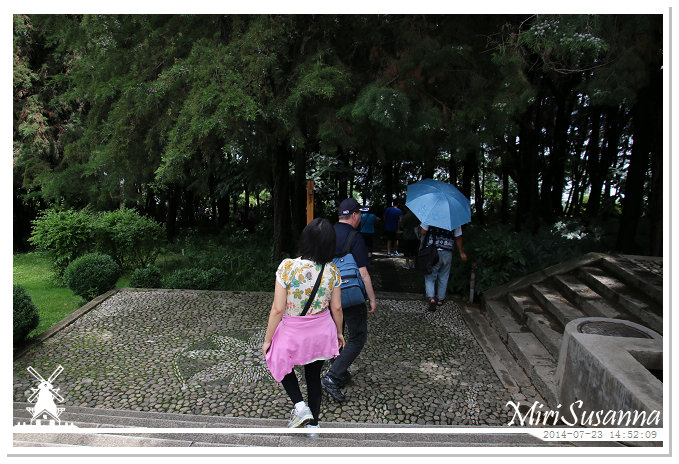
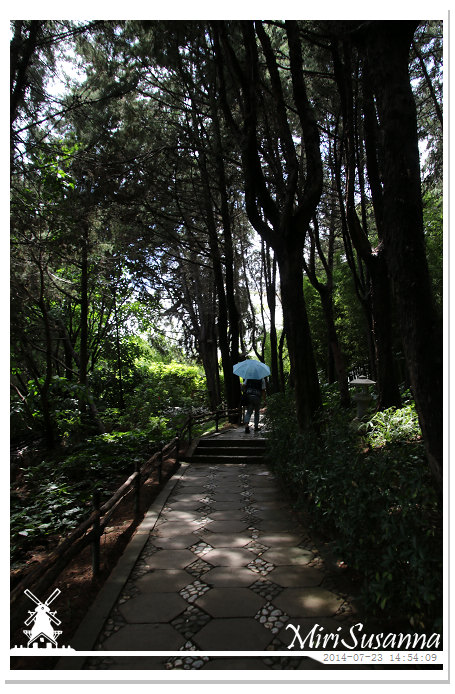
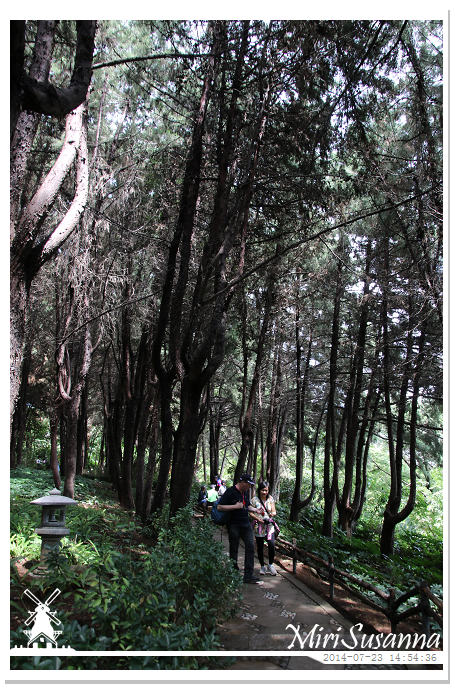
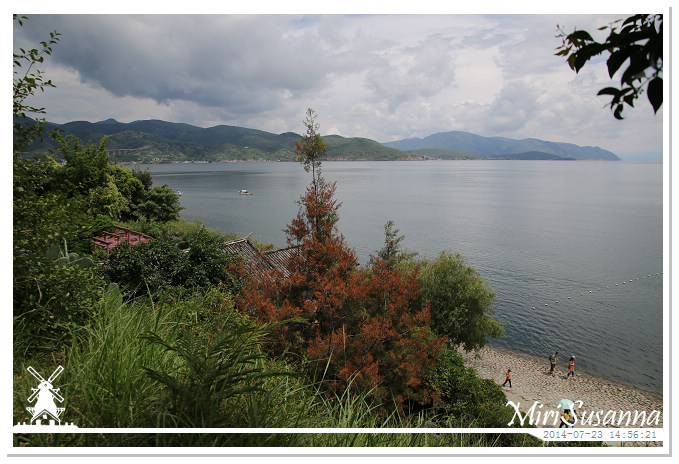

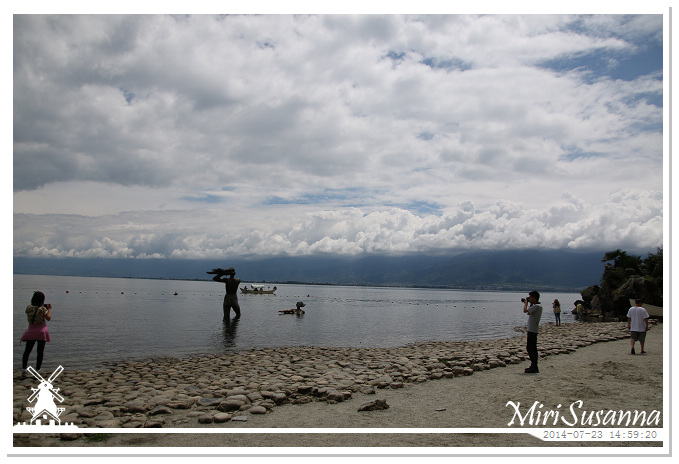
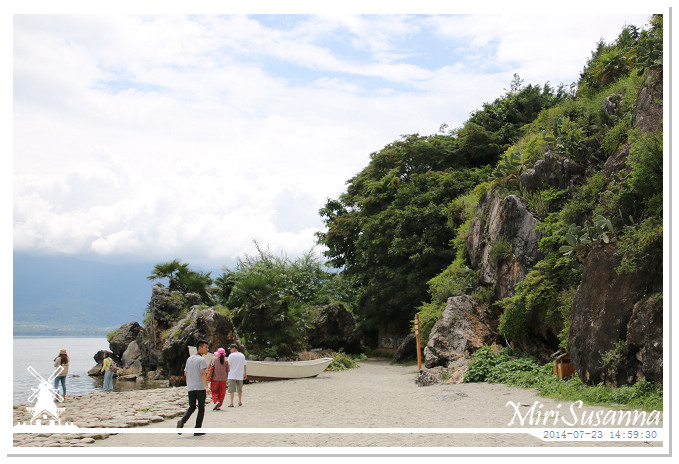
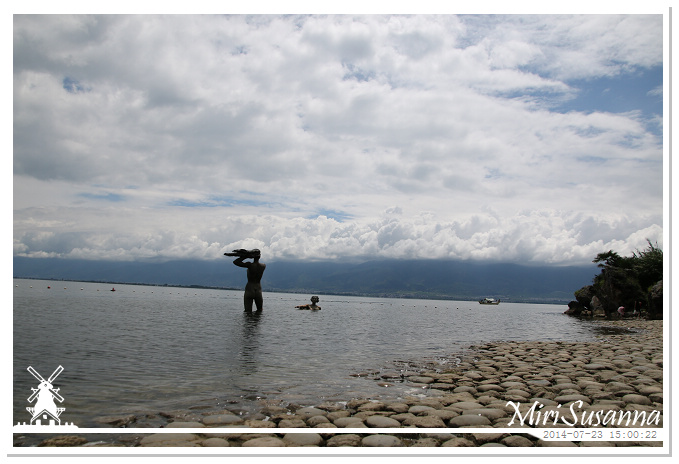
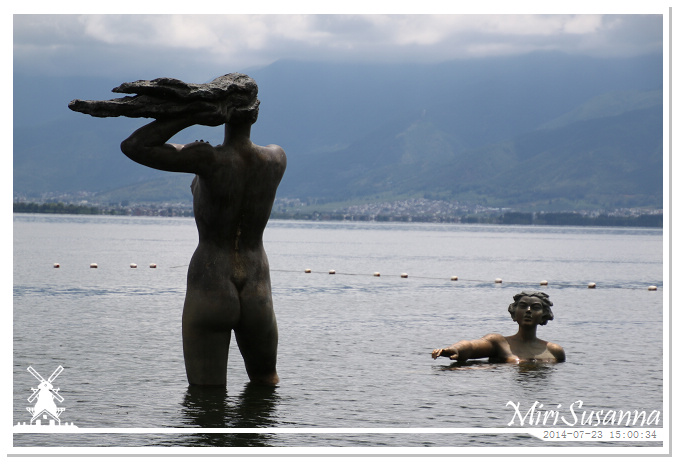
洱海的女兒。
Daughters of Erhai Lake.

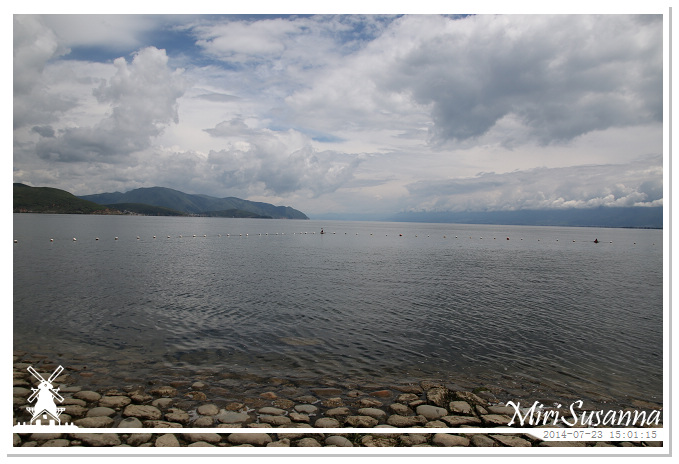
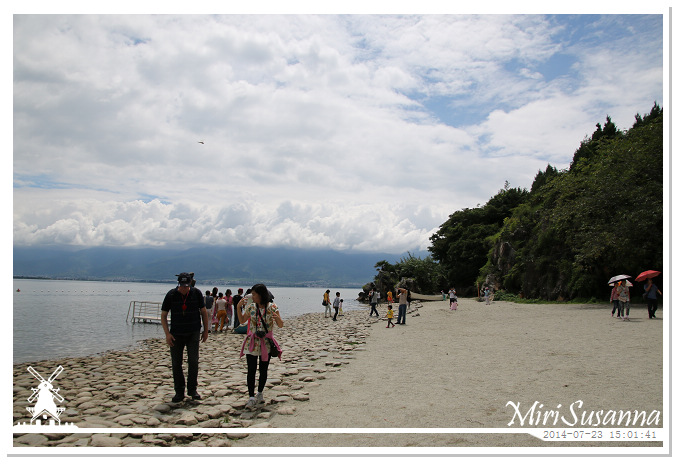


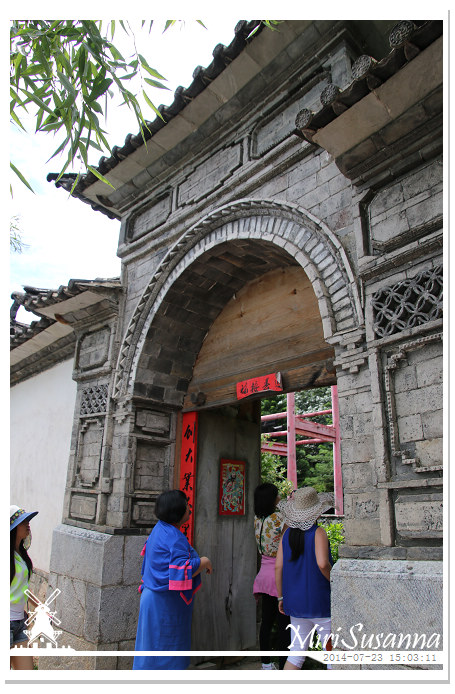
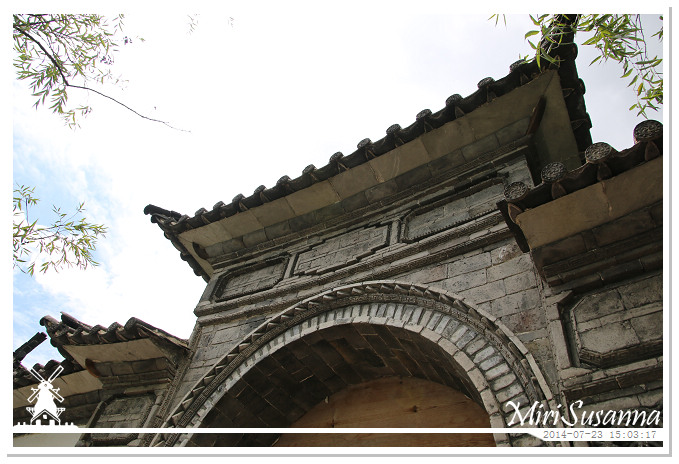
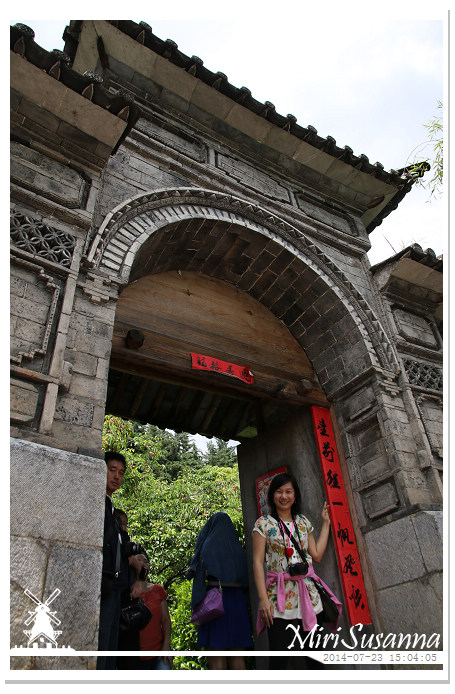

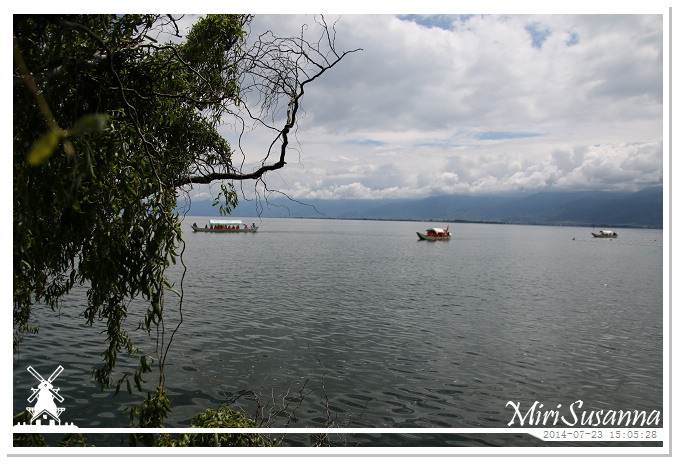


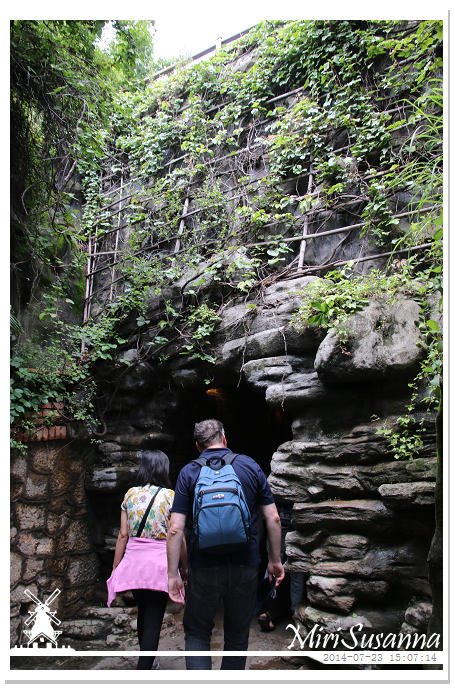
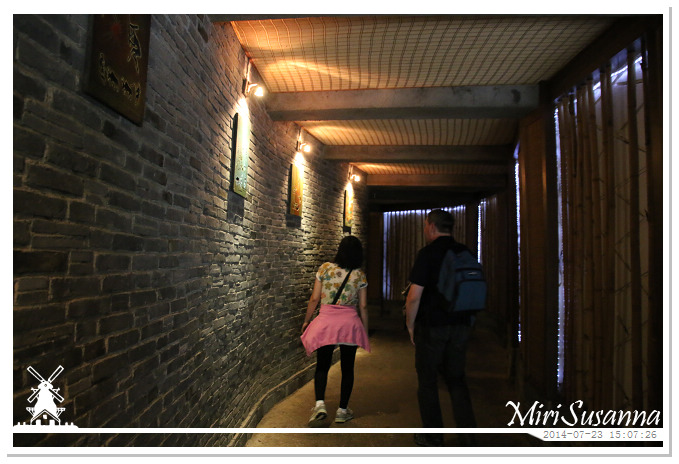

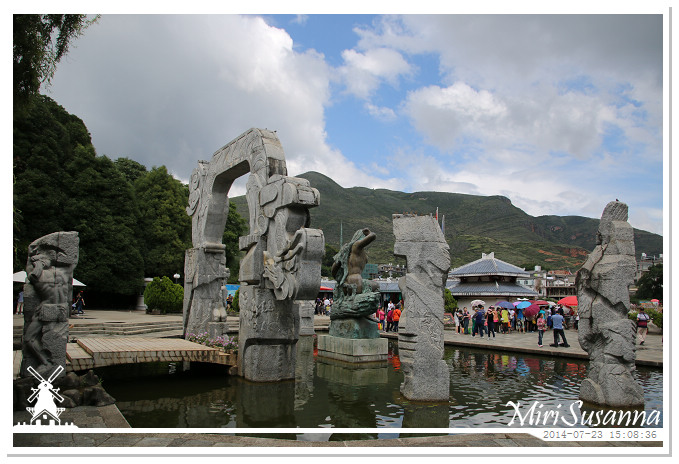
回到碼頭廣場。
Back to the square at marina.
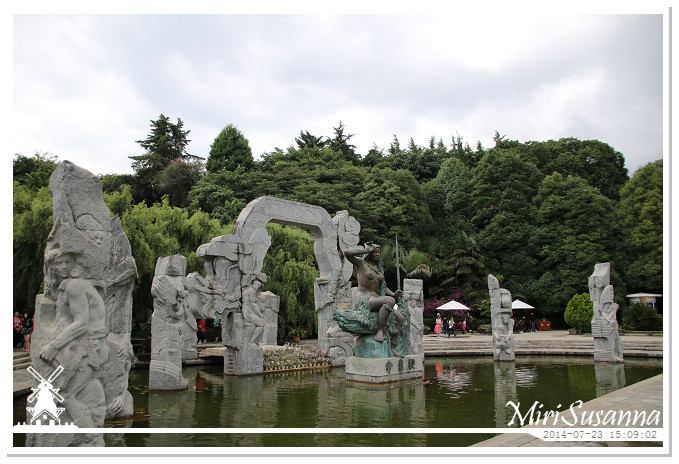
碼頭廣場上的“沙壹母”銅雕,背後的十根石柱代表沙壹母的十個兒子,象徵人類的十種原始勞作方式。
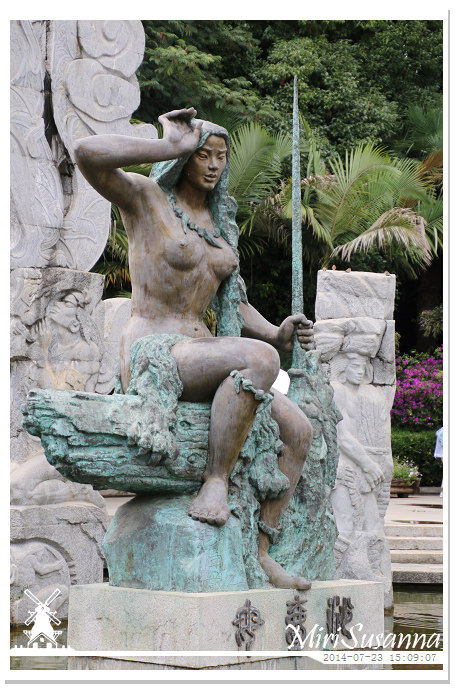
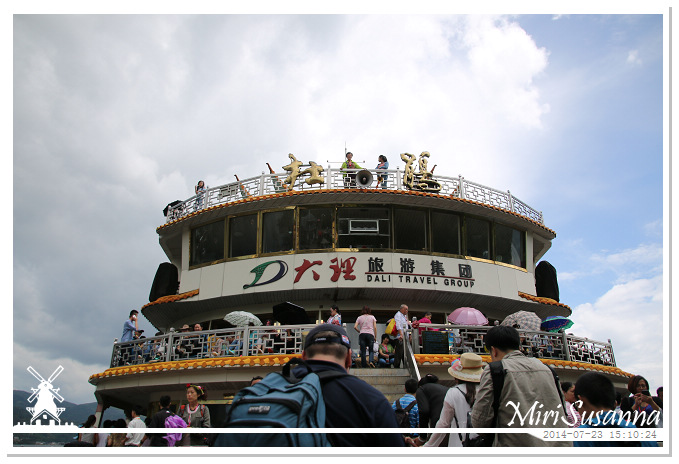
號角響了,又是登船的時候了。
Boarding again to continue our tour.
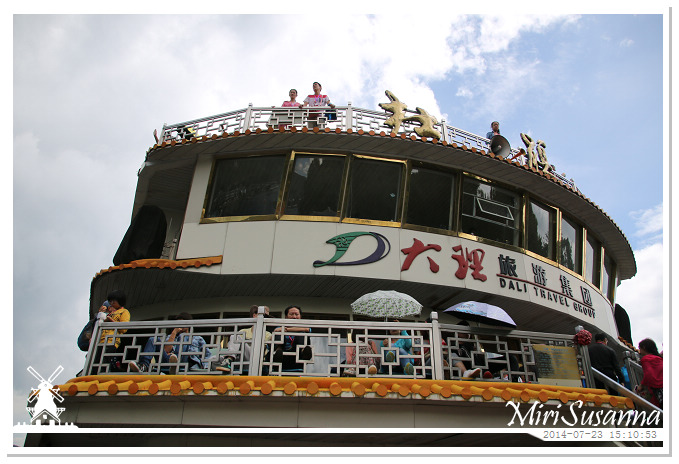
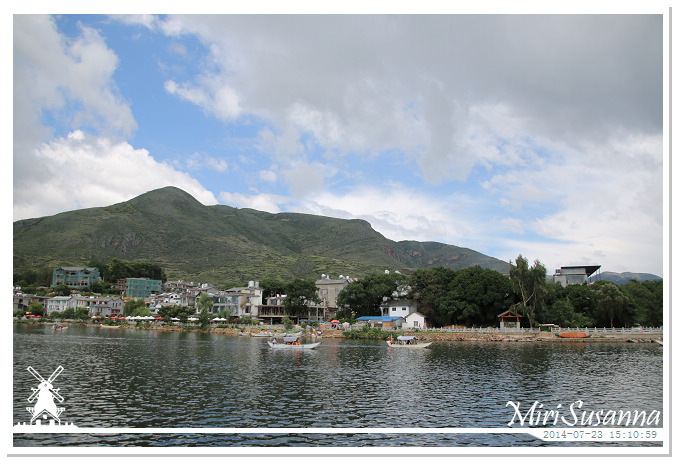

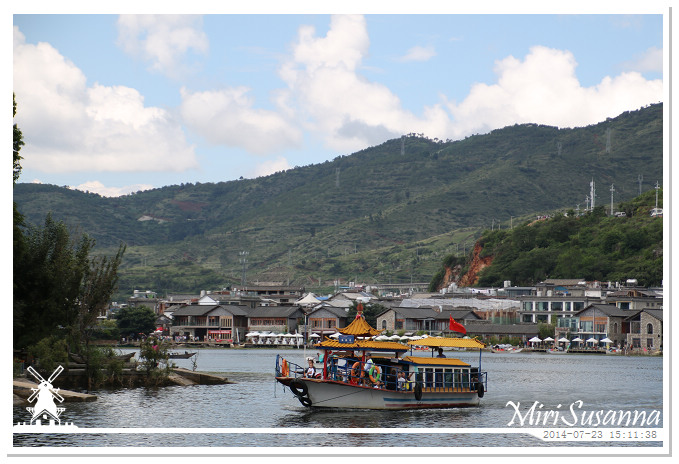
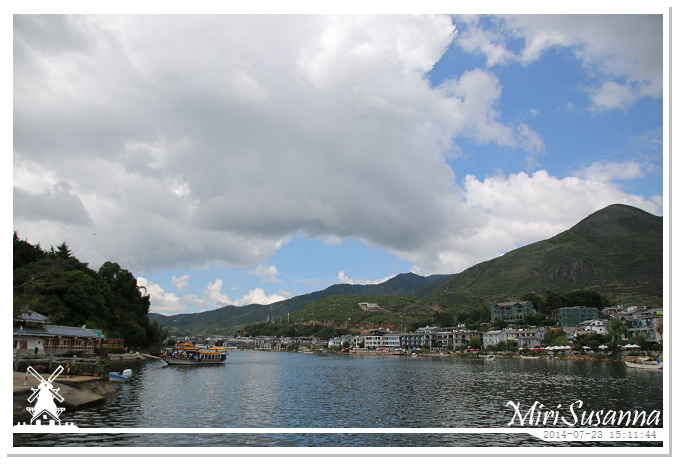

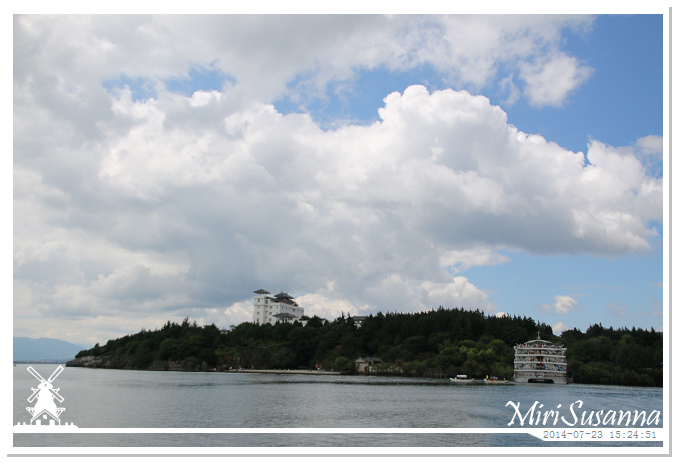
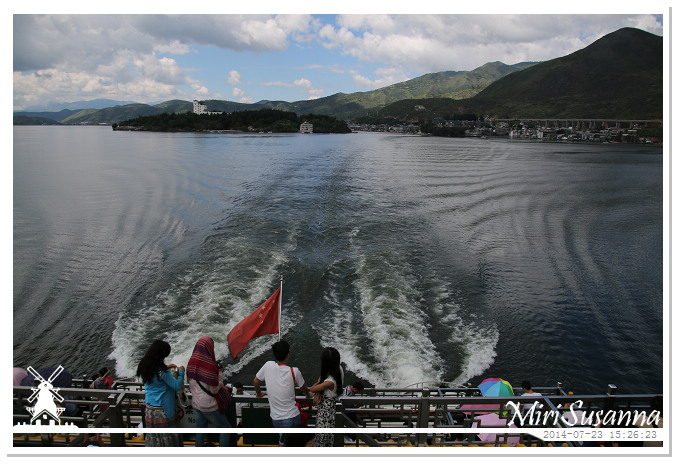
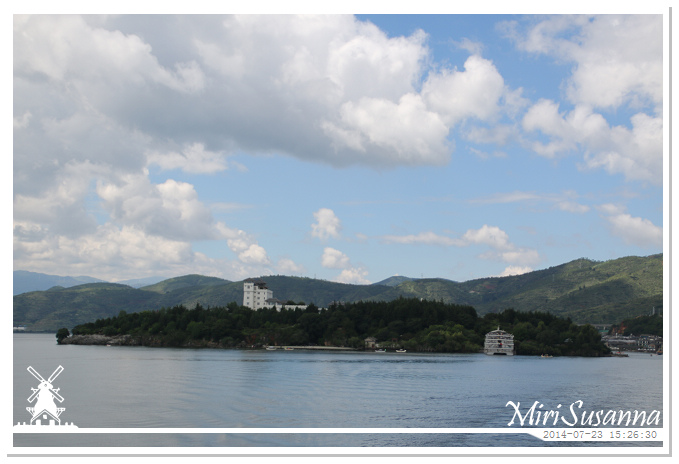
南詔風情島。
Nanzhao Amorous Island.
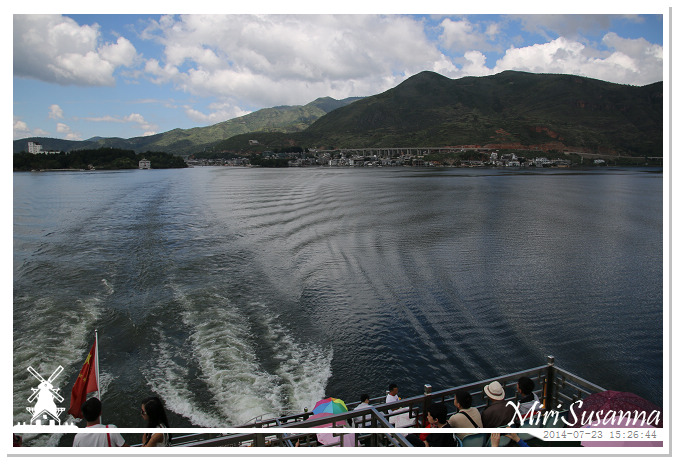
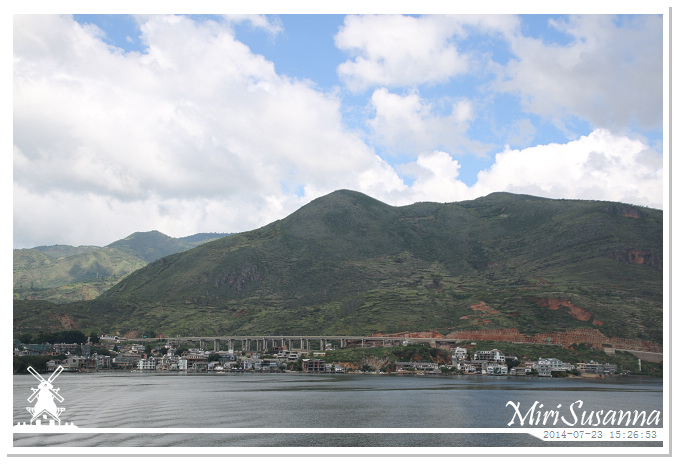
遊輪在洱海繼續行駛一個半小時才抵達終點,可見洱海何其大。
Then, we continued to travel for 1,5 hour to reach our destination. So you can image how large is the Erhai Lake.





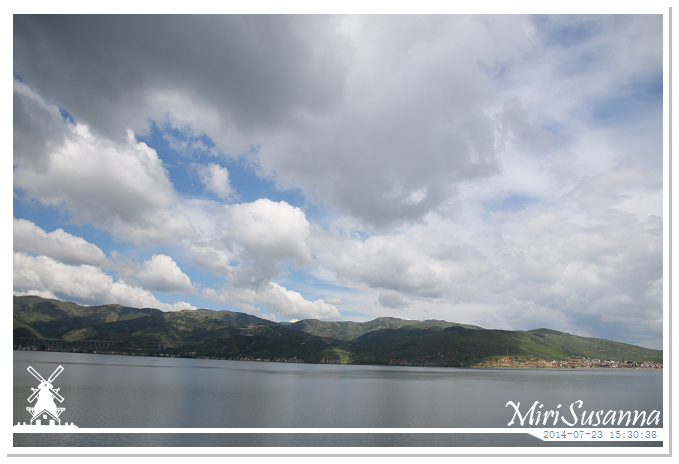

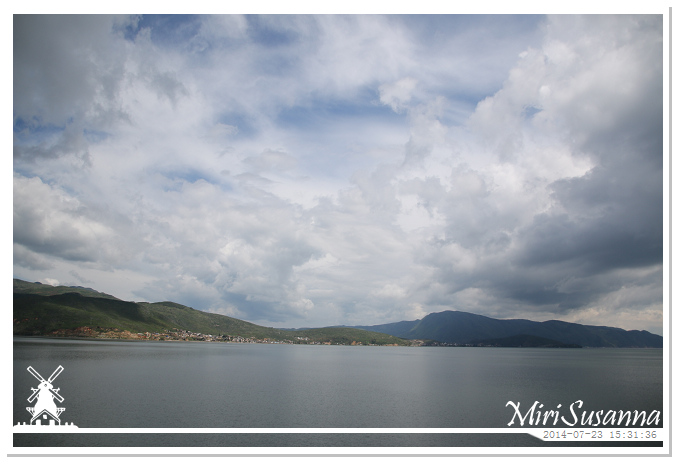
透過雲層的變化,蒼山洱海的景色也多變。
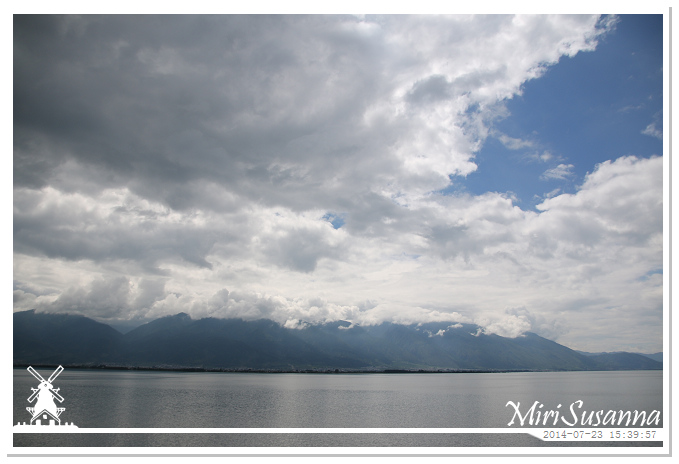
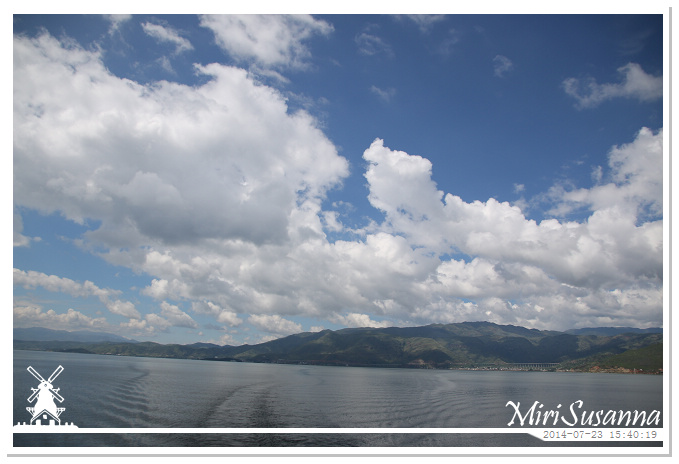
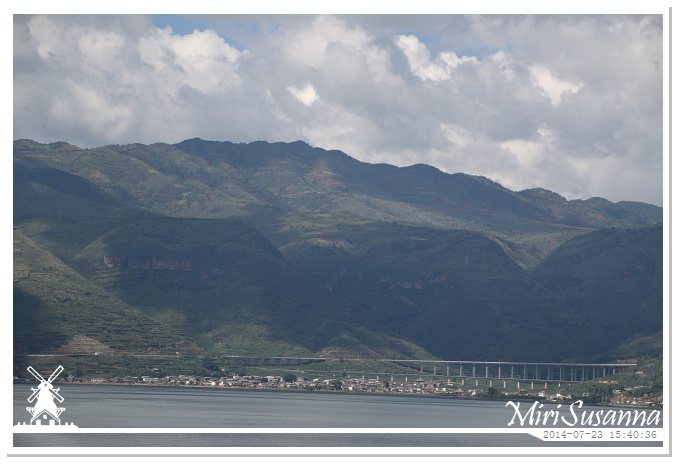

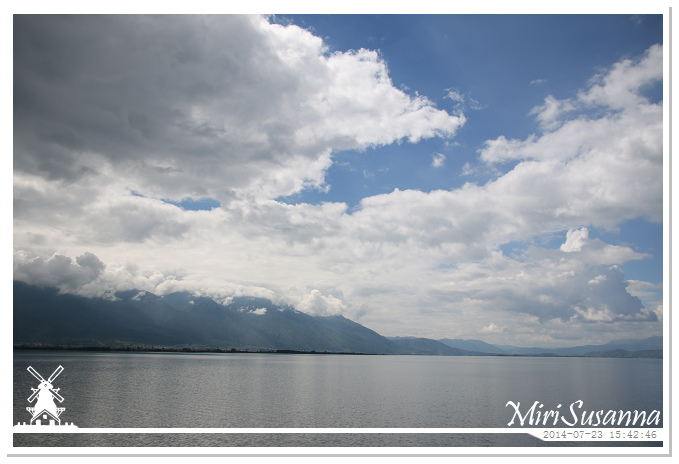
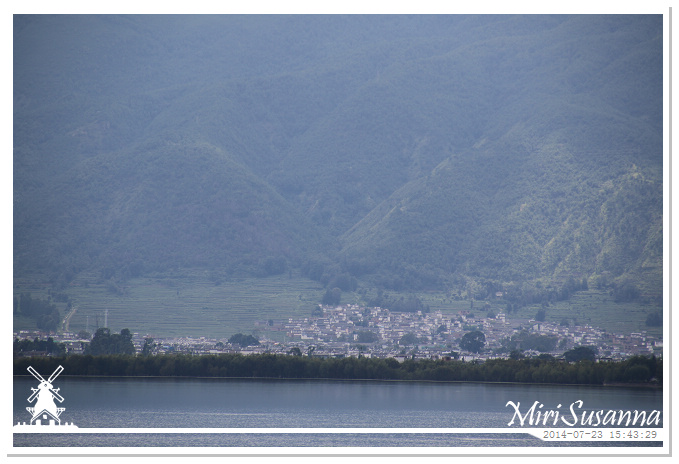
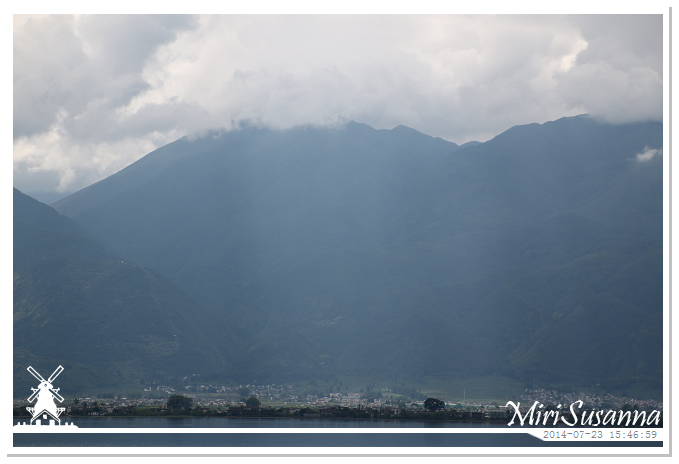
陽光灑落大地。
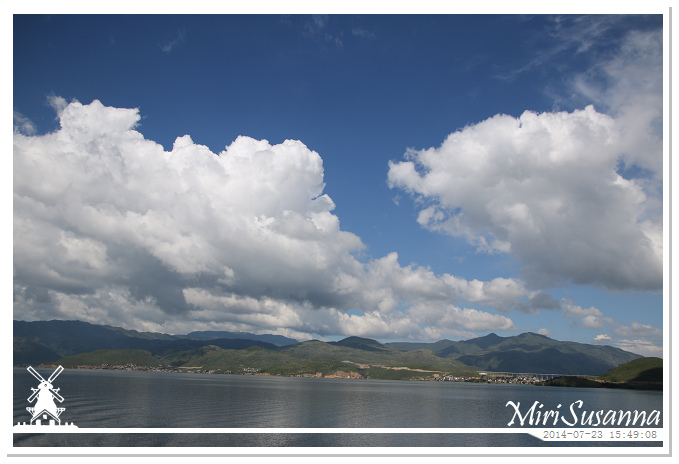
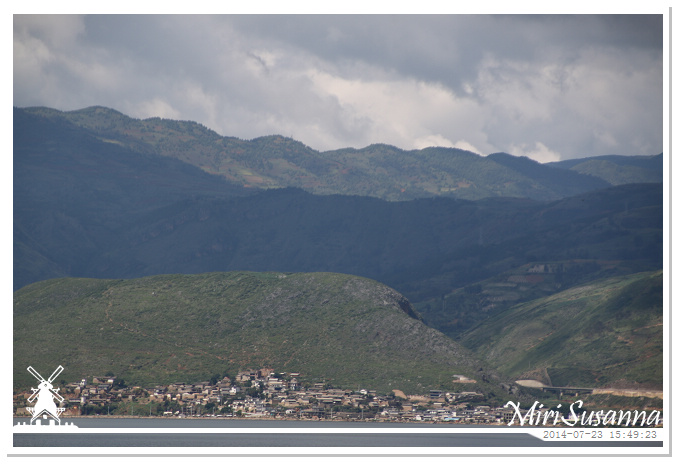
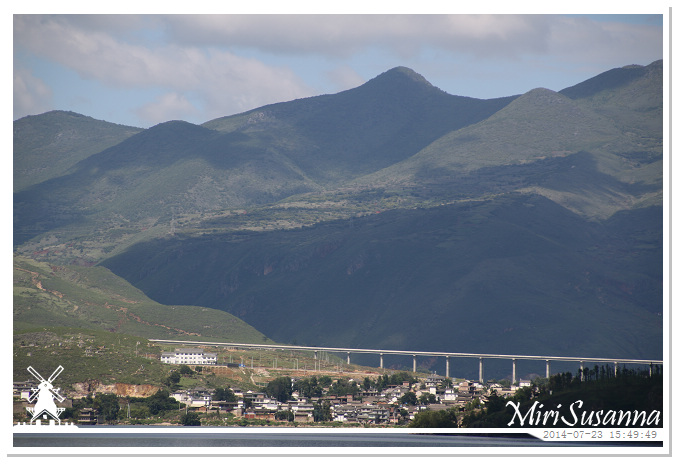
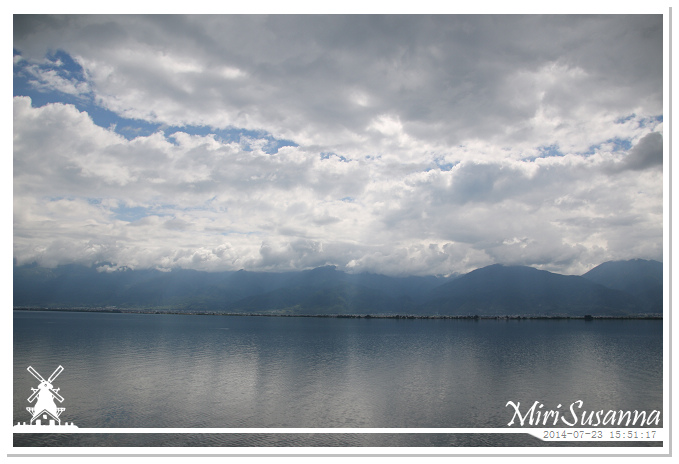


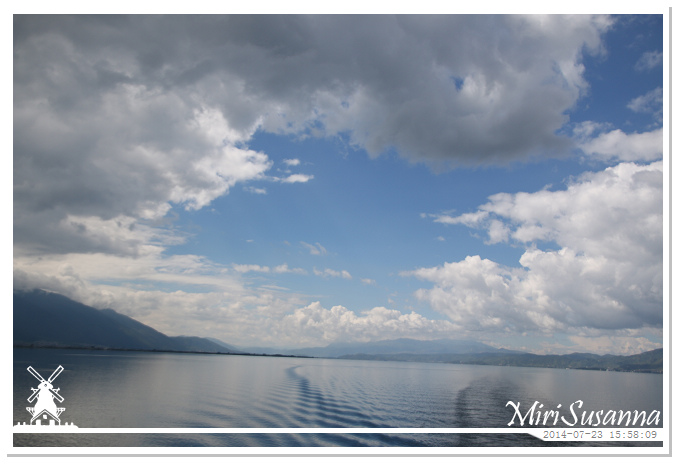
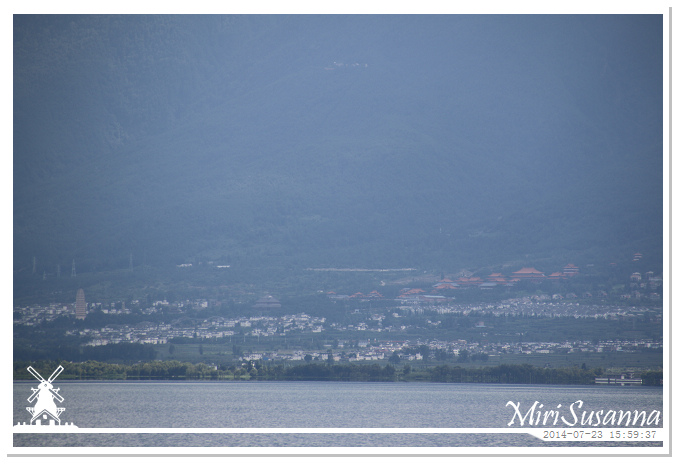
遠觀崇聖寺。
Chongsheng Temple.
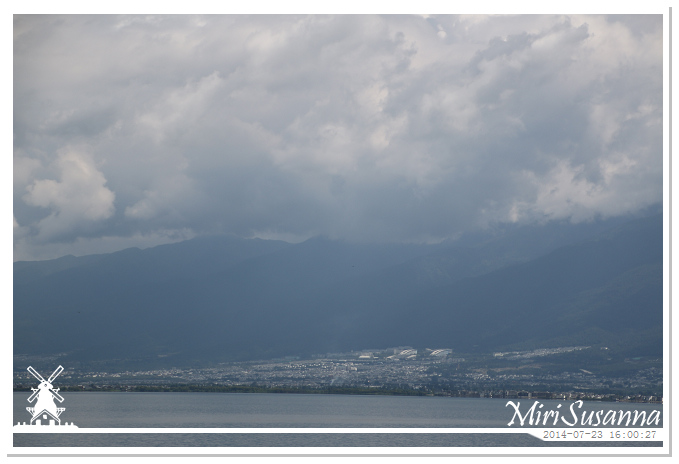

Dali City.
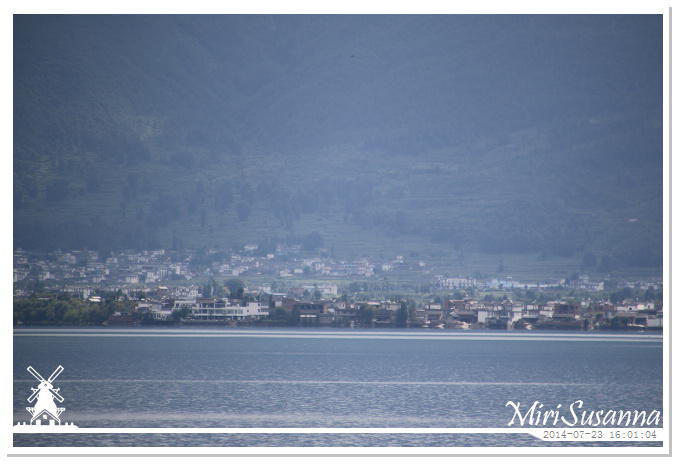

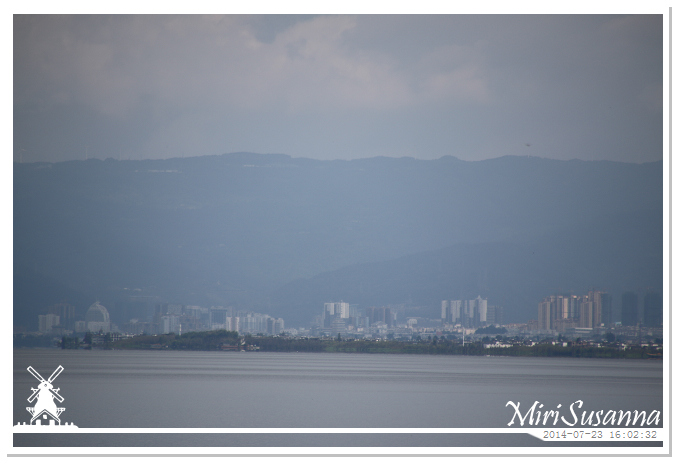
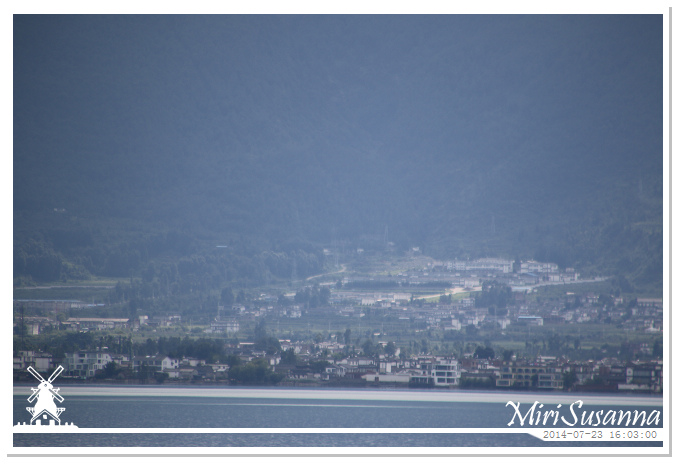
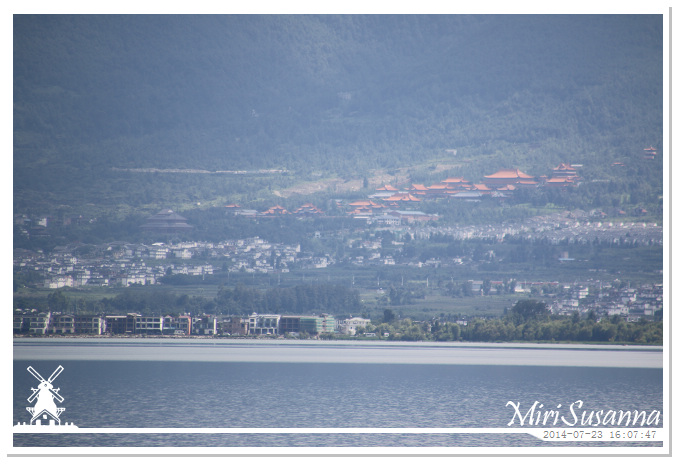



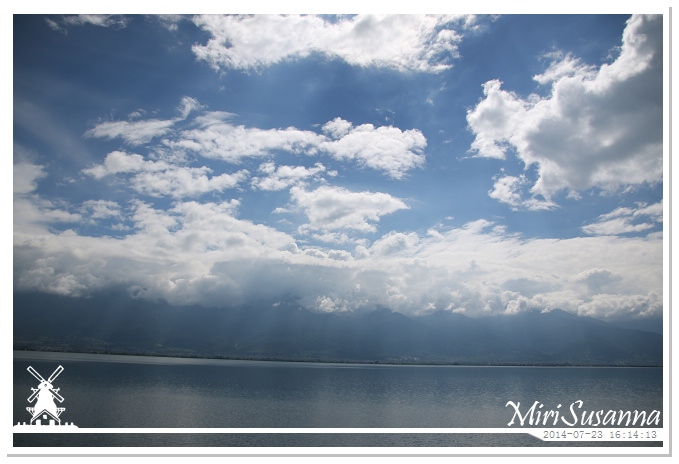


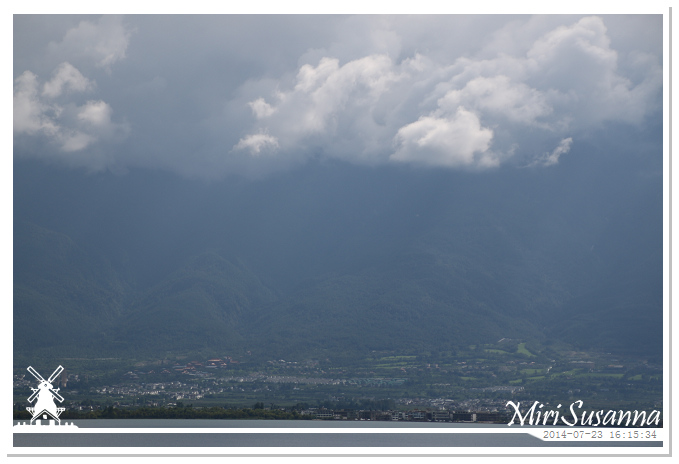
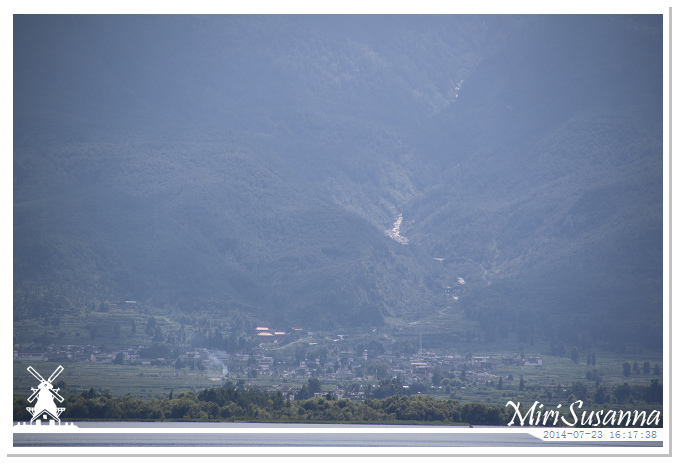

Dali City.

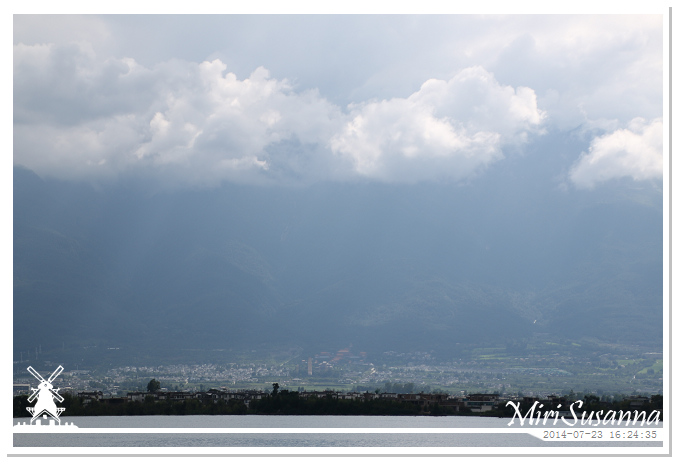

崇聖寺三塔。
Chongsheng Temple & Three Pagoda.
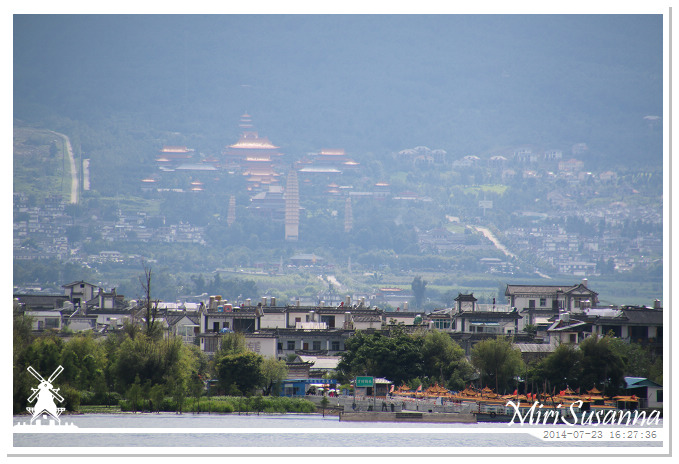
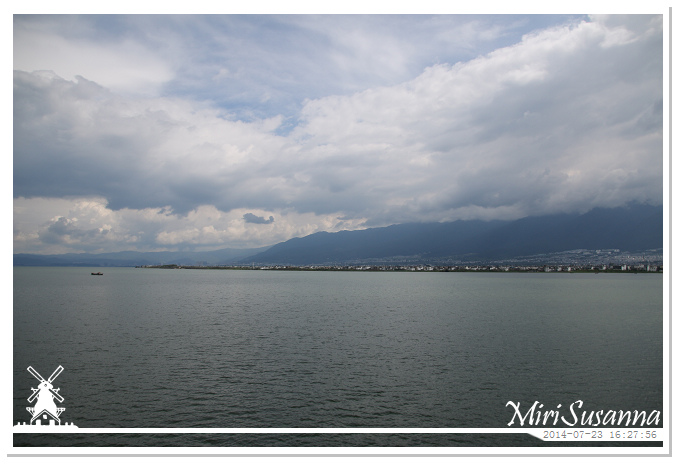

天境閣景區的高塔。
Pagoda at Tianjingge Scenic Area.


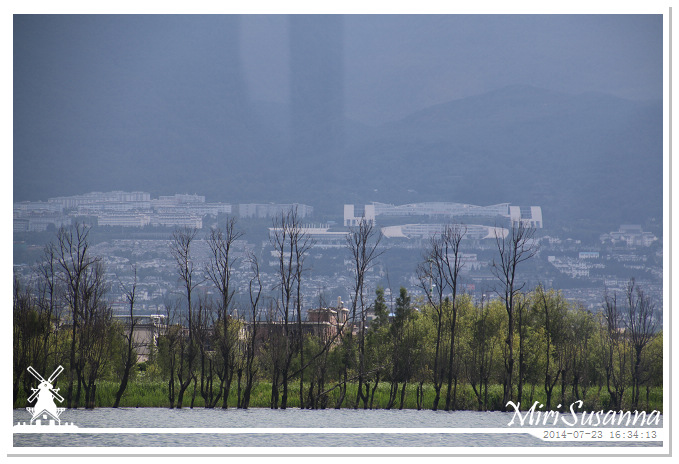
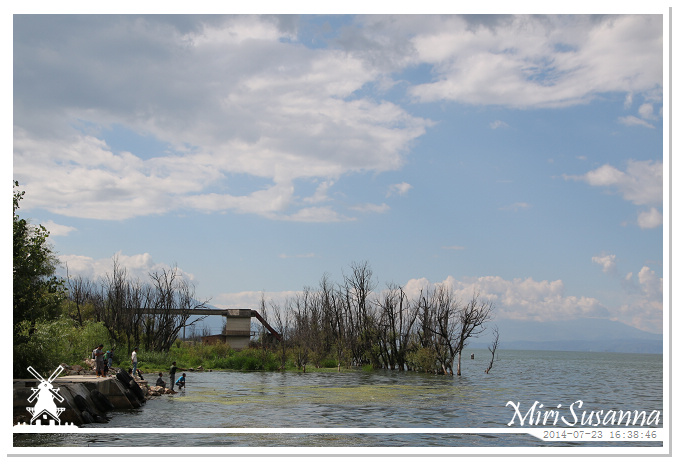
抵達在龍龛生態園的碼頭。
Arrived our destination.
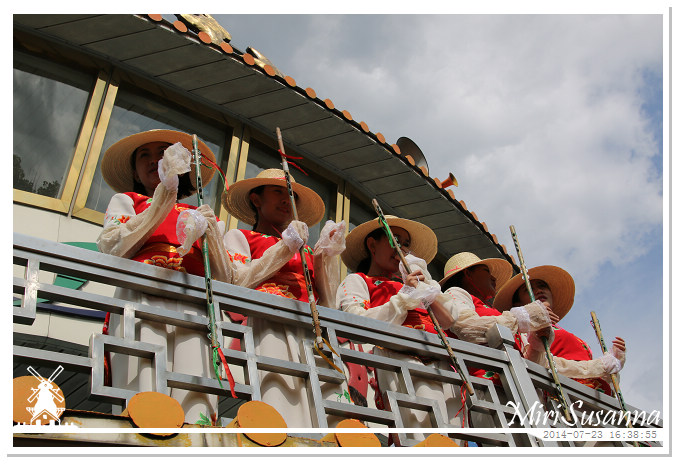


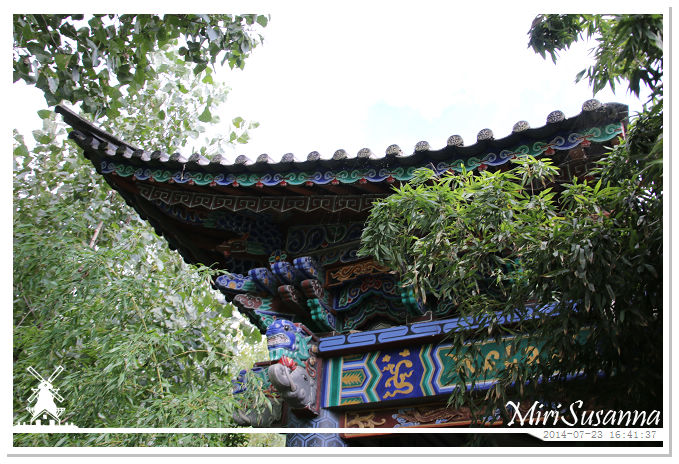

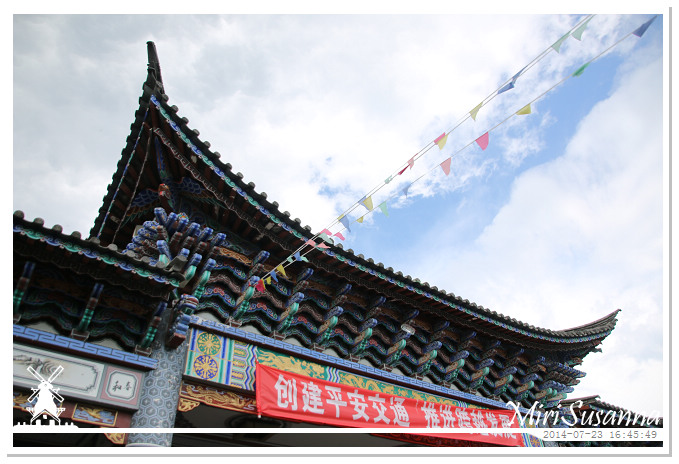
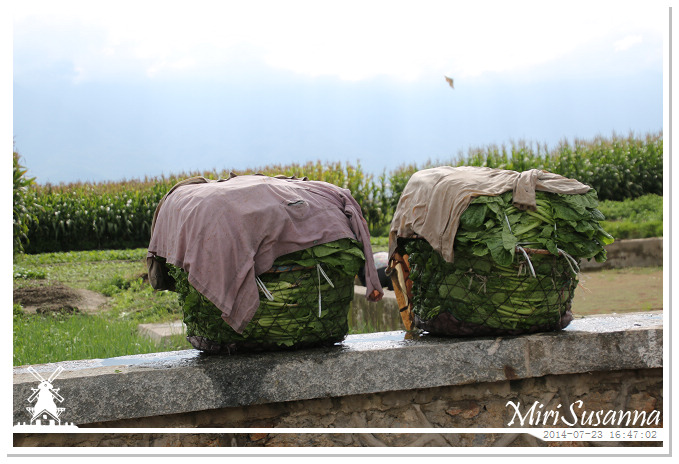
路旁的菜田。
Local vege farm.
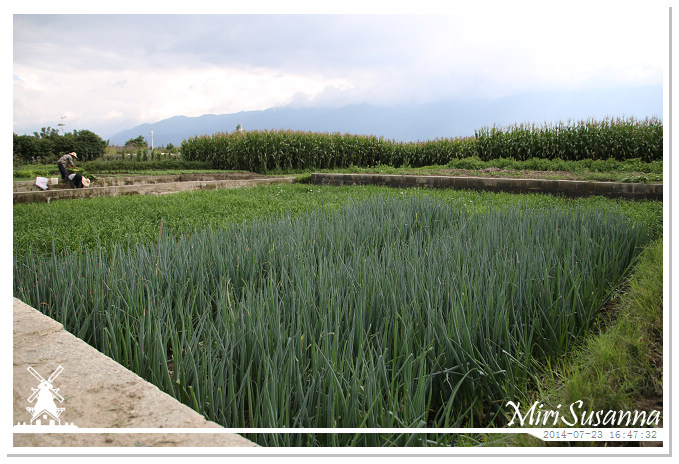
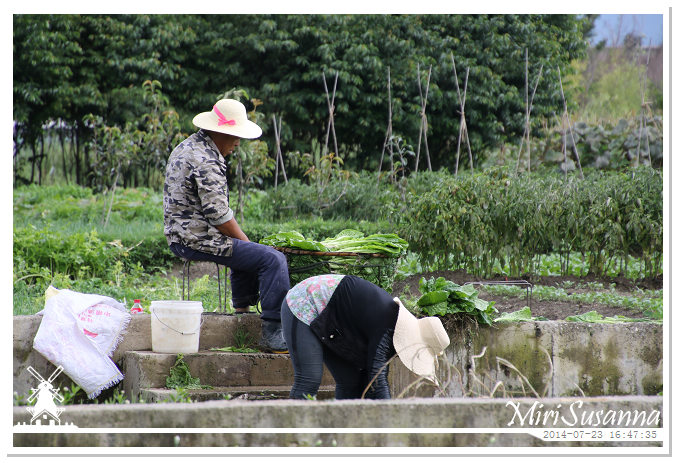

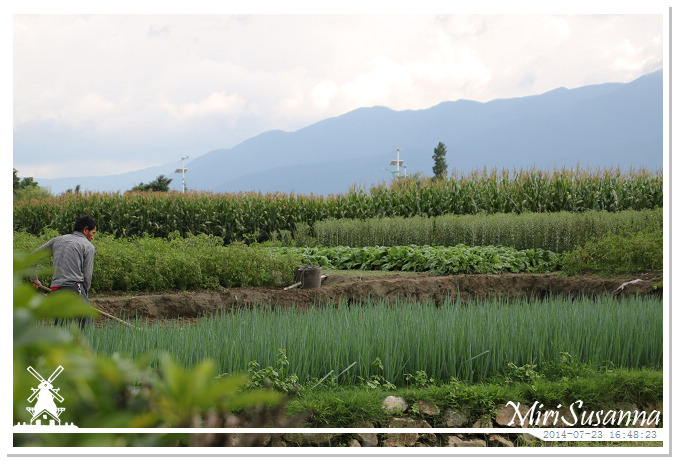
洱海風景區介紹(取自雲南中青國際旅行社,連結:
http://www.yunnaninfo.com/chinesebig5/yunnan/dali/attraction/erhai.htm)
洱海是一個風光明媚的高原淡水湖泊,在古代文獻中曾被稱為“葉榆澤”、“昆彌川”、“西洱河”、“西二河”等。水面海拔1972米左右,北起洱源縣江尾鄉,南止於大理市下關鎮,形如一彎新月,南北長41.5公里,東西寬3—9公里,周長116公里,面積251平方公里。洱海屬瀾滄江水系,北有彌苴河和彌茨河注入,東南匯波羅江,西納蒼山十八溪水,水源豐富,匯水面積2565平方公里,平均容水量為28.2億立方米,平均水深10.5米,最深處達20.5米。湖水從西洱河流出,與漾江匯合注入瀾滄江。
洱海西面有點蒼山橫列如屏,東面有玉案山環繞襯托,空間環境極為優美,“水光萬頃開天鏡,山色四時環翠屏”,素有“銀蒼玉洱”、“高原明珠”之稱。自古及今,不知有多高人韻士寫下了對其讚美不絕的詩文。南詔清平官楊奇鯤在其被收入《全唐詩》的一首詩作中描寫它“風裡浪花吹又白,雨中嵐影洗還清”;元代郭松年《大理行記》又稱它“浩蕩汪洋,煙波無際”。凡此種種,不勝枚舉。洱海氣候溫和濕潤,風光綺麗,景色宜人。巡遊洱海,島嶼、岩穴、湖沼、沙洲,林木、村舍,各具風采,令人賞心悅目。古人將其概括為“三島、四洲、五湖、九曲。”
三島:金梭島,玉幾島、赤文島;
四洲:青莎鼻洲、大鸛淜洲、鴛鴦洲、馬濂洲;
五湖:太湖、蓮花湖、星湖、神湖、渚湖;
九曲:蓮花曲、大鸛曲、潘磯曲、鳳翼曲、羅蒔曲、牛角曲、波曲,高莒曲,鶴翥曲。
隨著四時朝暮的變化,各種景觀呈現出萬千氣象,於是,古人又為之歸納為“洱海八景”,即:山海大觀、三島煙雲、海鏡開天、嵐靄普陀、滄波濞舟、四閣風濤,海水秋色,洱海月映。當中所提到的四閣,便是古人為點綴、觀賞洱海所陸續建造的四大名閣:天鏡閣(位於海東)、珠海閣(位於洱海公園團山)、浩然閣(又名豐樂亭,位於才村海邊)、水月閣(位於洱海北端雙廊,與珠海閣遙相對峙)。四大名閣雖已倒塌不全,有待恢復重建,而這些名勝佳景的詩文佳句卻時常見諸史籍。如明代白族學者李元陽詠水月閣的詩雲“百二山河至此終,水晶皎皎漾蟾宮,鼓琴應許蛟龍聽,吹笛能教鸑鷟遊”。從中我們不難體會到自古及今洱海人文景觀之盛。
洱海水產資源也十分豐富,有各種魚類,水鳥、蝦、螺螄、蚌、水獺、菱角、蘆葦、海菜等等。魚類有鯉魚、弓魚、油魚、鰾魚、小白魚、鯽魚、草魚、青魚。其中弓魚被譽為魚魁。洱海是大理風景區的主要風景資源,也是白族祖先最主要的發祥地。迄今為止,在洱海及其周圍的山坡臺地上所發現的新石器時代遺址共達30多處。海東金梭島就是一個著名的新石器遺址。最近又發現雙廊玉幾島也是新石器時代和青銅器時代的重要遺址,除了出土大量生產生活用的石器、陶器之外尚有青銅器山字形格劍,銅柄鐵刃劍,以及鑄造這些兵器的陶範。由此可以推斷它或許還是古代白族先民冶煉鑄造青銅器乃至進入鐵器時代的生產基地。在這裡每個時代都有歷史的遺留,我們似乎可以聽到白族祖先從蒙昧時代步步走向文明的足音。因此,也可以說:洱海是白族的搖籃。
Erhai Lake (http://www.travelchinayunnan.com/city/dali/attraction/erhai.htm)
Erhai Lake, also known as Yeyu Pond, Xi’er River and Kunmi River in old times, is named after its shape and expanse. “Er” in Chinese means a human ear and “Hai” means a sea, hence its name Erhai. It is one of the seven biggest fresh water lakes in China and the largest highland lake next to Dianchi Lake (in Kunming). So it was called “Plateau Pearl”. The dimension is 41.5 km. by 6.9 km. It starts from Jiangwei of Eryuan County in the north and ends at Xiaguan in the south. The total storage capacity is 3 billion cubic metres and its elevation 1,972 metres.
Erhai Lake is a barrier lake formed after a fault foundering of the earth’s crust. It originates in Heigushan Mountain of Er’yuan. The water mainly comes from the Miju River and Luoshi River in Er’yuan County, the 18 brooks of Cangshan in the west, and the Boluo River, Fengwei Brook, Yulong Gully and Shitou Brook in the southeast, which converge into a mighty torrent and then flow into Erhai Lake. After that, it again flows into the Lancangjiang River by passing through Tianshengqiao (Natural Bridge) of Xiaguan, where a multistage power station of medium size stand, and the Yangbi River in the west over a distance of more than 20 km.
The beautiful scenery and limpid waters of Erhai Lake are charming and attractive. On the boundless expanse of the lake, there are steamers, sailing boats, flying birds, the Three Islets, the Four Sand Bars, the Five Miniature Lakes and the Nine Curvatures, with their reflections in the placid water, accompanied by Bai girls in bright-coloured costumes on the shore or in fishing boats singing the praises of their life. The picturesque scenery makes you feel relaxed and happy. The white snow over the green Cangshan Mountain and the limpid water of Erhai Lake have earned Dali the fame of “Jade Erhai and Silver Cangshan.” During a clear night, the moon is mirrored in the lake and people call it the “Erhai Moon” which is one of the four best sights of Dali. It would be a great pity if people travelling to Dali do not go for a boat ride in the lake, just like people travelling to Kunming without having a glance at the scenery of Xishan (the Western Hills).